Tom's Hardware Verdict
Thermaltake's Toughpower PF1 ARGB power supply with 1200W capacity achieves high performance, and it is built like a tank. It isn't so quiet, though.
Pros
- +
Full power at 47 degrees Celsius
- +
High overall performance
- +
Good build quality
- +
Very good transient response
- +
Fully modular
Cons
- -
Noisy
- -
Expensive
- -
Inaccurate Power Ok signal
- -
Low efficiency at 5VSB
- -
Low efficiency with light loads
Why you can trust Tom's Hardware
Specifications and Part Analysis
The Thermaltake Toughpower PF1 ARGB with 1200W max power is a high-end and super expensive power supply, offering good performance along with RGB lighting features. Its major downside is the noisy operation. The Corsair HX1200 and the similar-capacity Asus Rog Thor power supplies offer equally high performance along with much lower noise output.
Thermaltake's Toughpower PF1 ARGB line consists of three models, with 850W, 1050W, and 1200W capacities. As the naming scheme implies, those units feature RGB lighting, so they are ideal for users with windowed chassis. All three are based on a Channel Well Technology (CWT) platform, and the build quality is high. Unfortunately, the price tags are also high, while the availability is restricted since Thermaltake had to pull from all major US stores those products, because of the recent tariffs in PC parts that are made in China. Currently, the US users can only buy a Toughpower PF1 unit through Thermaltake's ttpremium store.
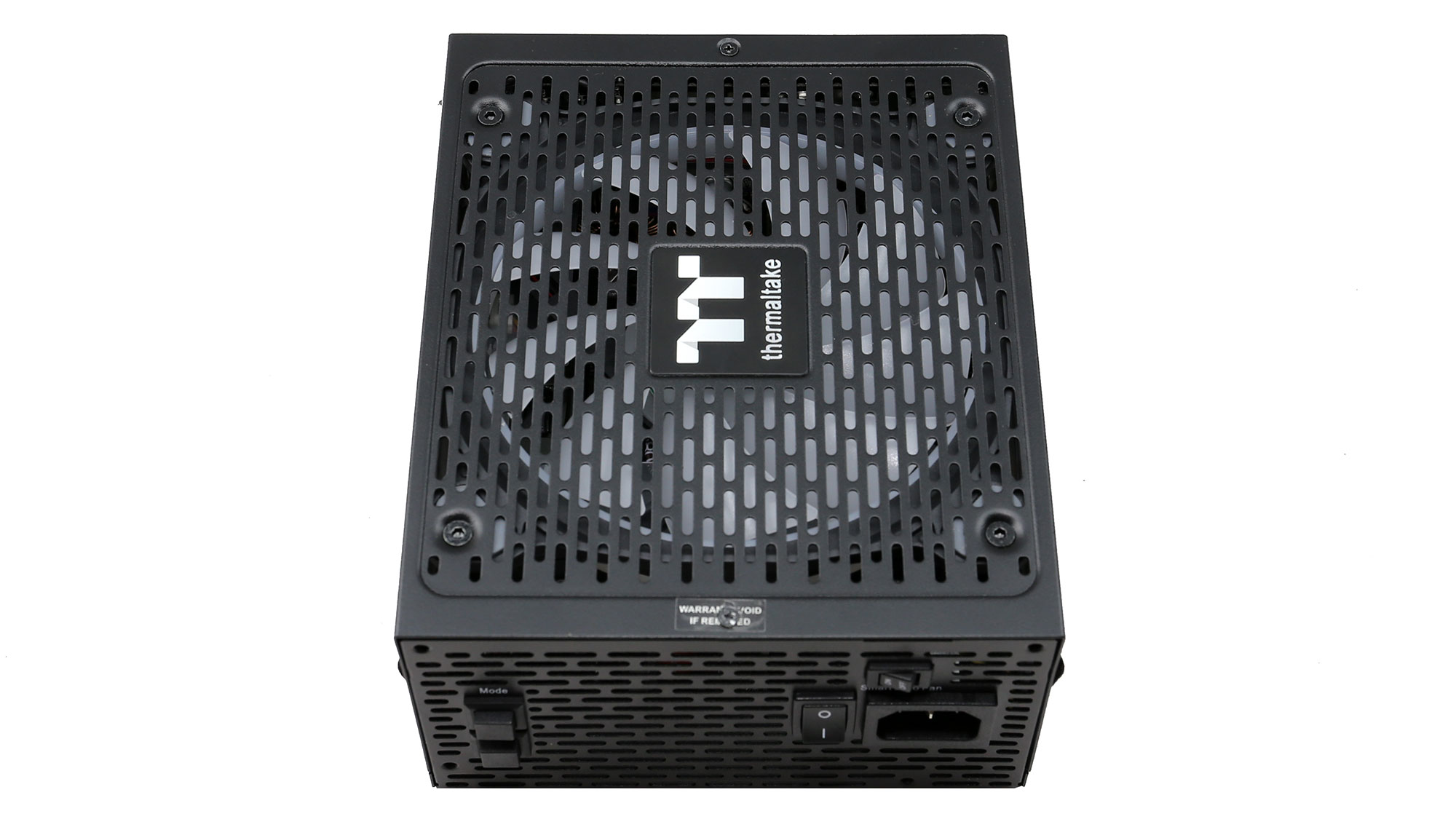
Product Photos

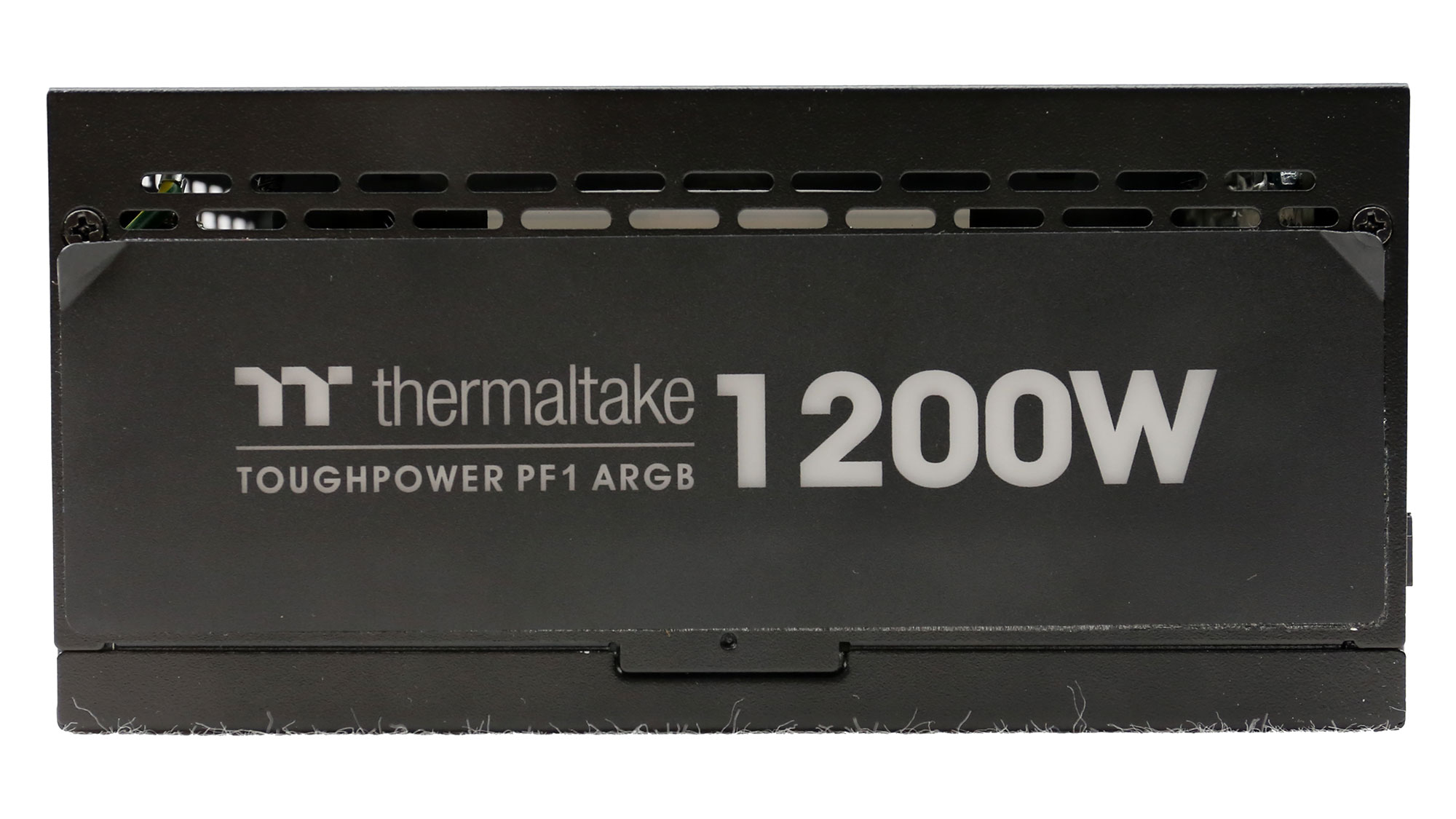

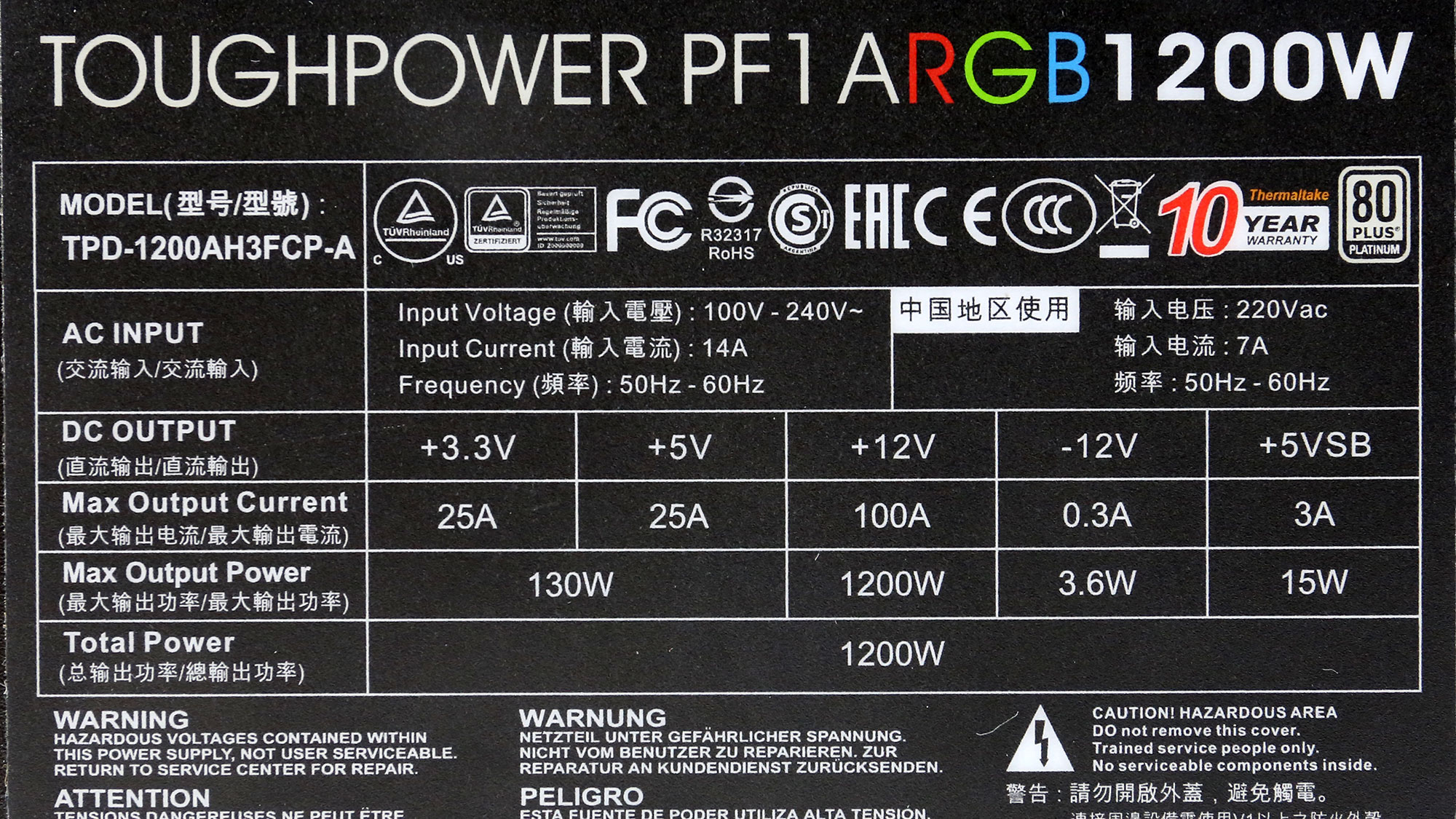
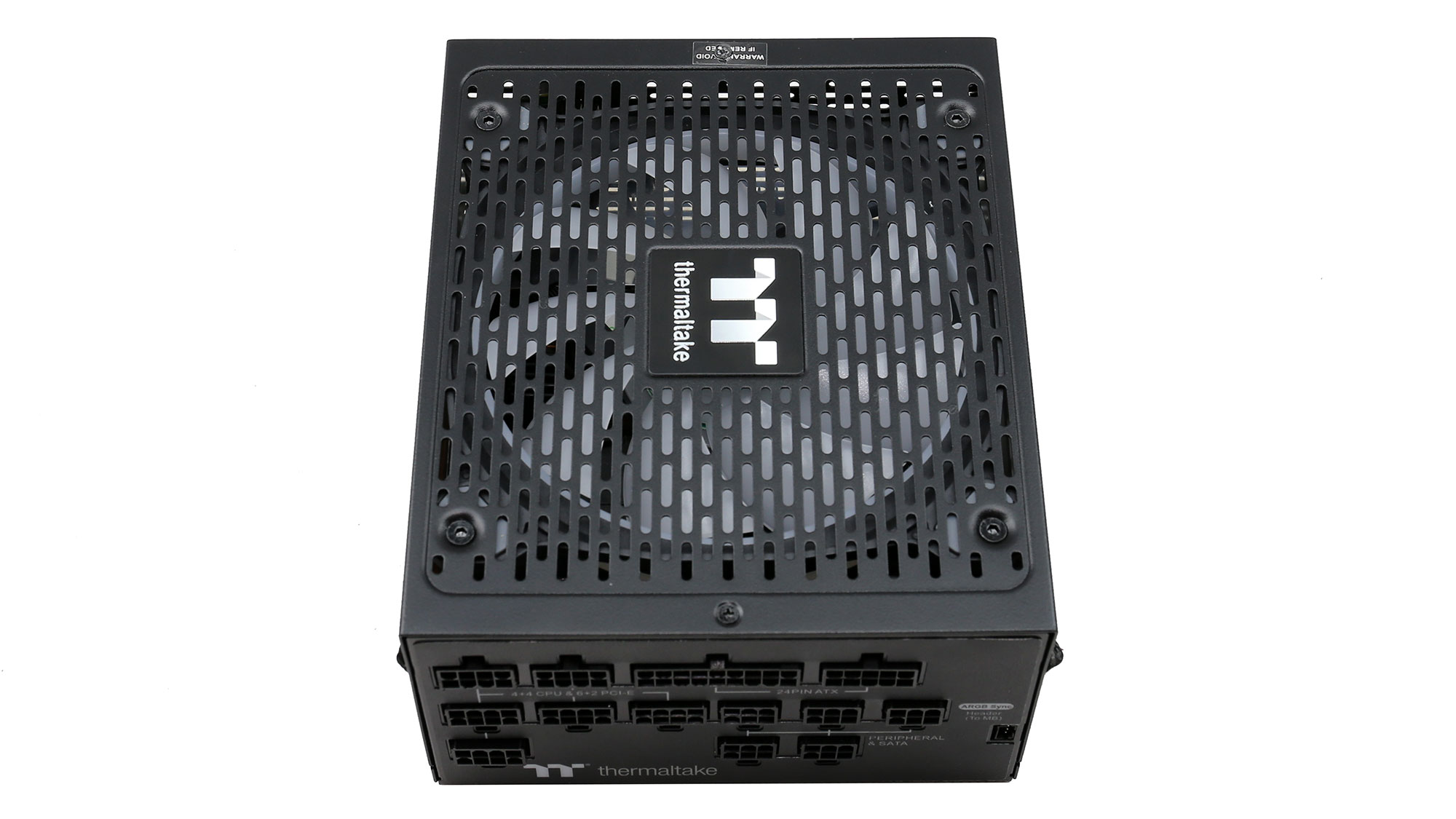

The PF1 1200W utilizes a fully modular cable design, and at its front, we find two buttons for the manual control of its RGB lighting. Besides the power switch, there is an additional one for toggling on/off the semi-passive operation.
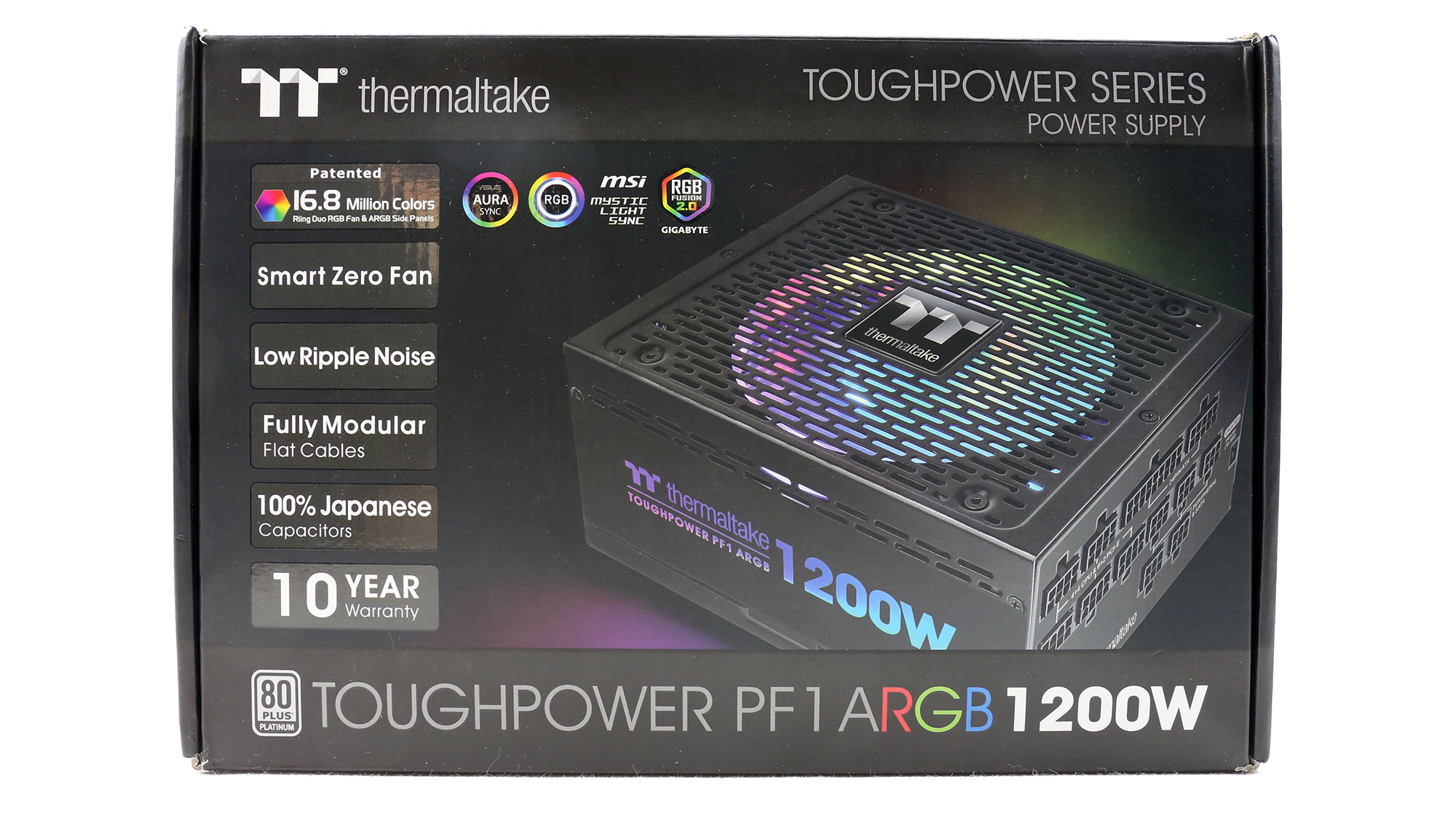
Product Photos
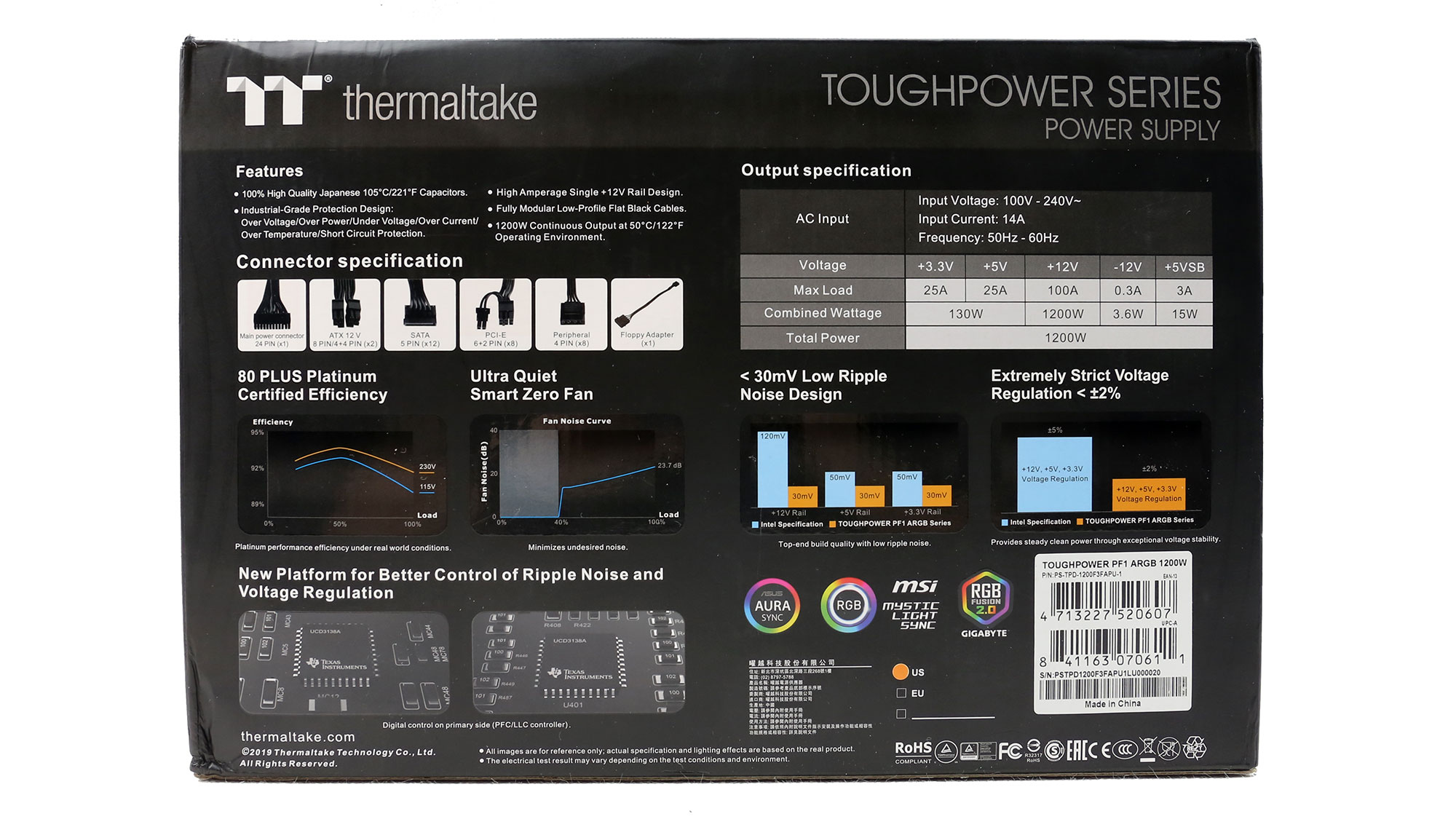
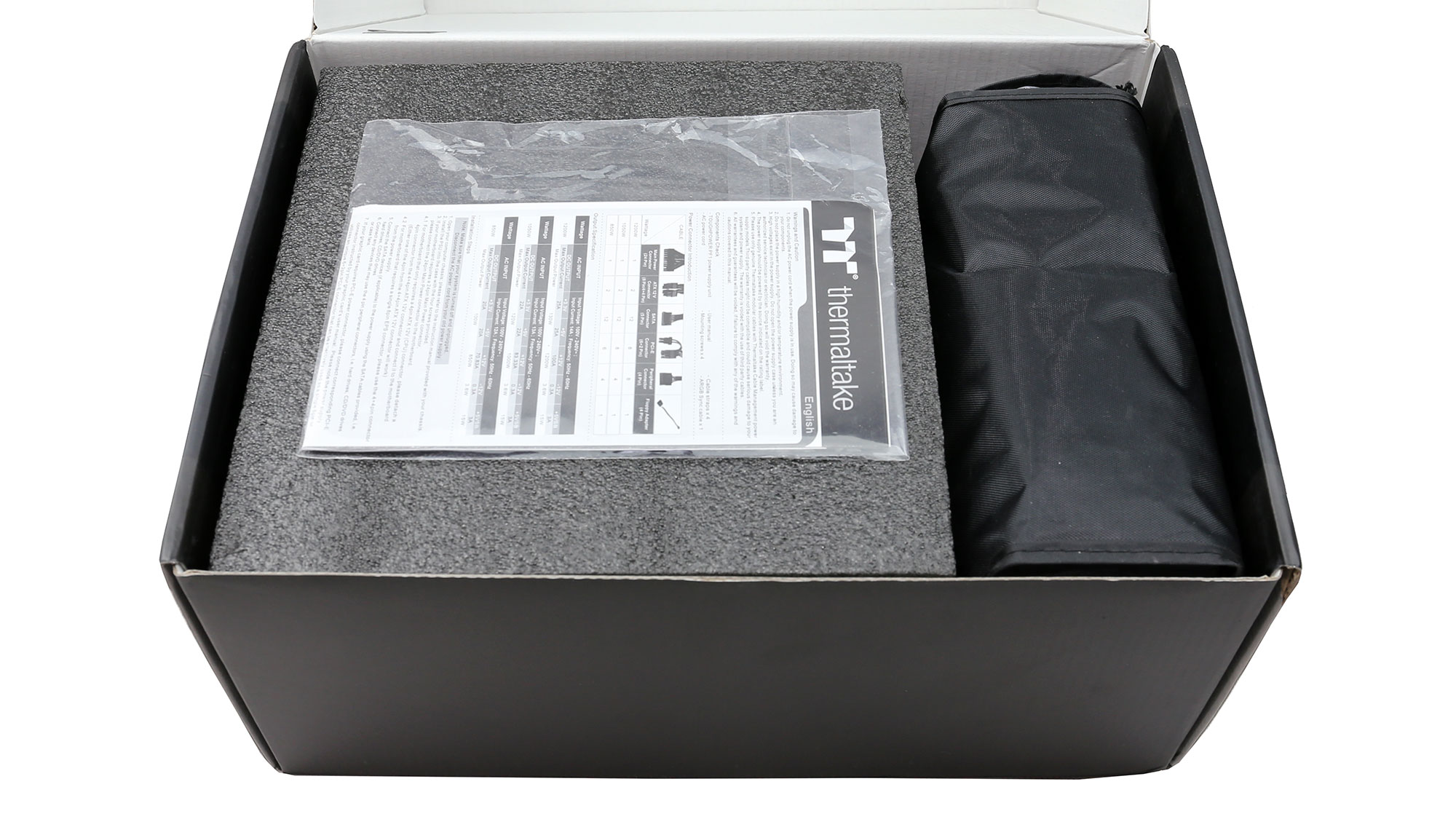

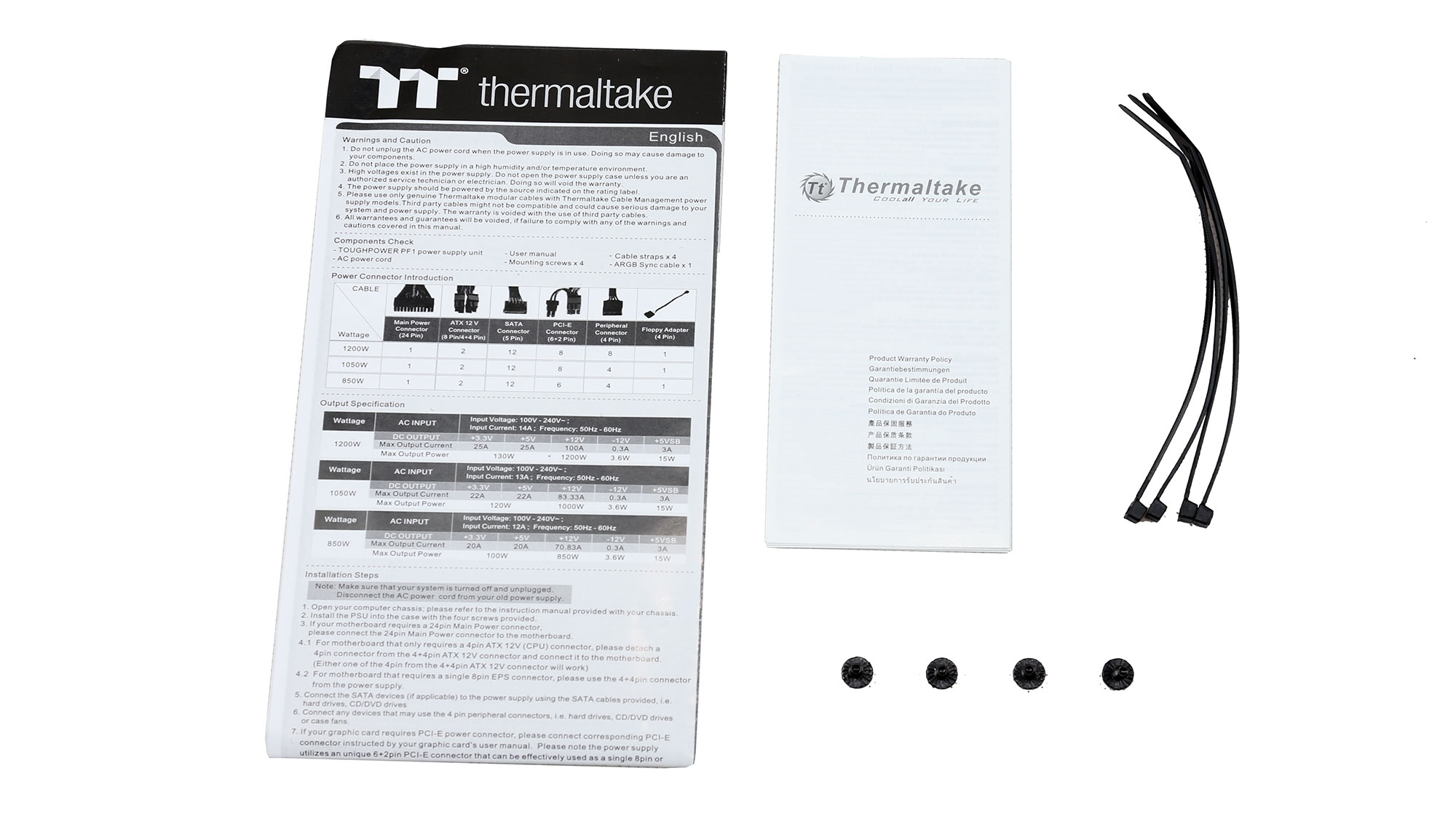
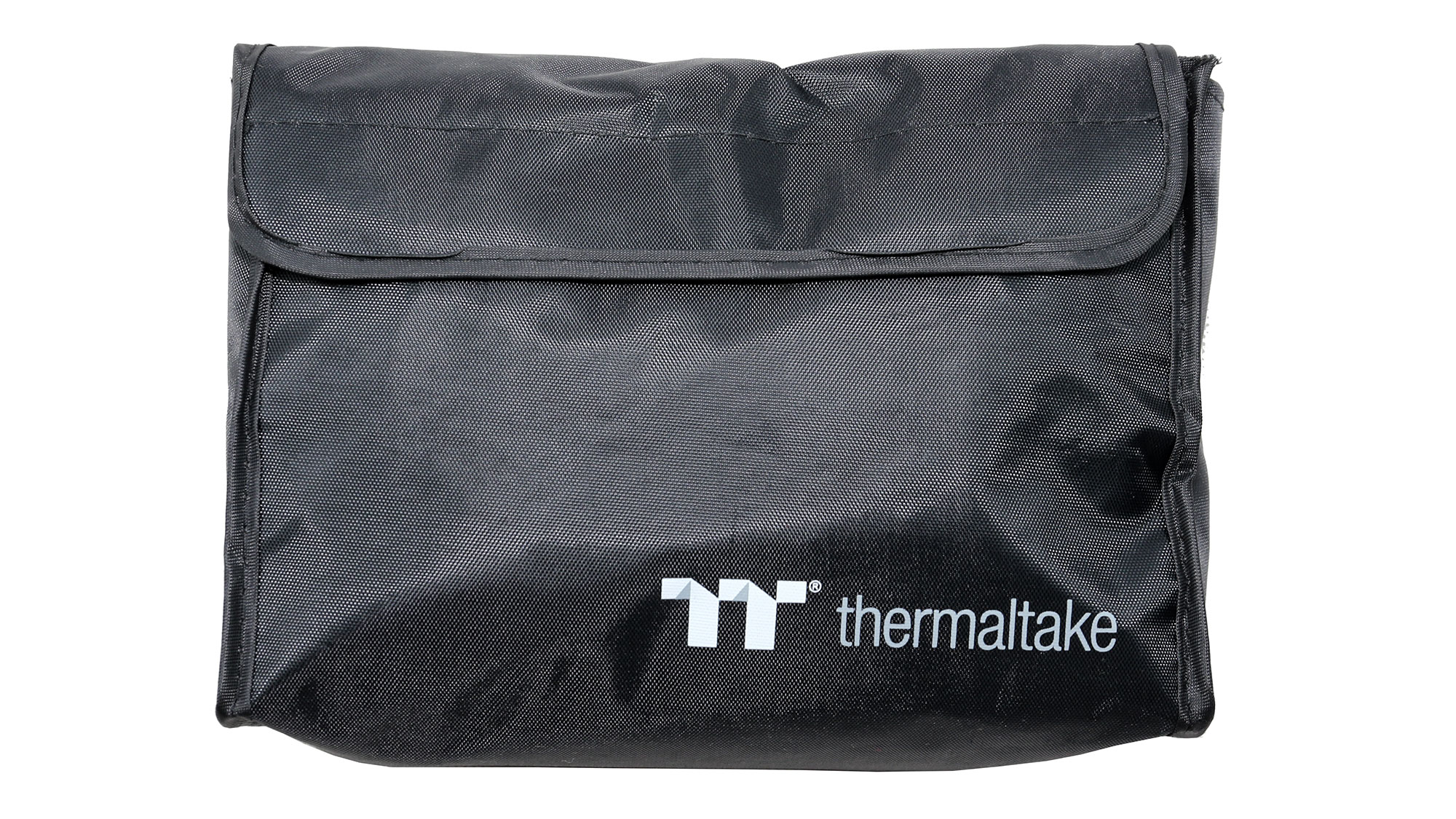
Specifications
|
Manufacturer (OEM) |
CWT |
|
Max. DC Output |
1200W |
|
Efficiency |
80 PLUS Platinum, ETA-A (88-91%) |
|
Noise |
LAMBDA-S+ (35-40 dB[A]) |
|
Modular |
✓ (Fully) |
|
Intel C6/C7 Power State Support |
✓ |
|
Operating Temperature (Continuous Full Load) |
0 - 50°C |
|
Over Voltage Protection |
✓ |
|
Under Voltage Protection |
✓ |
|
Over Power Protection |
✓ |
|
Over Current (+12V) Protection |
✓ |
|
Over Temperature Protection |
✓ |
|
Short Circuit Protection |
✓ |
|
Surge Protection |
✓ |
|
Inrush Current Protection |
✓ |
|
Fan Failure Protection |
✗ |
|
No Load Operation |
✓ |
|
Cooling |
140mm HDB RGB Fan (TT-1425/A1425S12S-2) |
|
Semi-Passive Operation |
✓ (selectable) |
|
Dimensions (W x H x D) |
152 x 88 x 178mm |
|
Weight |
2.07 kg (4.56 lb) |
|
Form Factor |
ATX12V v2.4, EPS 2.92 |
|
Warranty |
10 Years |
Besides an 80 PLUS Platinum certification, the PF1 1200W is also certified by Cybenetics, achieving ETA-A and LAMBDA-S+ efficiency and noise ratings.
Power Specifications
| Rail | 3.3V | 5V | 12V | 5VSB | -12V | |
|---|---|---|---|---|---|---|
| Max. Power | Amps | 25 | 25 | 100 | 3 | 0.6 |
| Watts | 130 | 1200 | 15 | 3.6 | ||
| Total Max. Power (W) | 1200 |
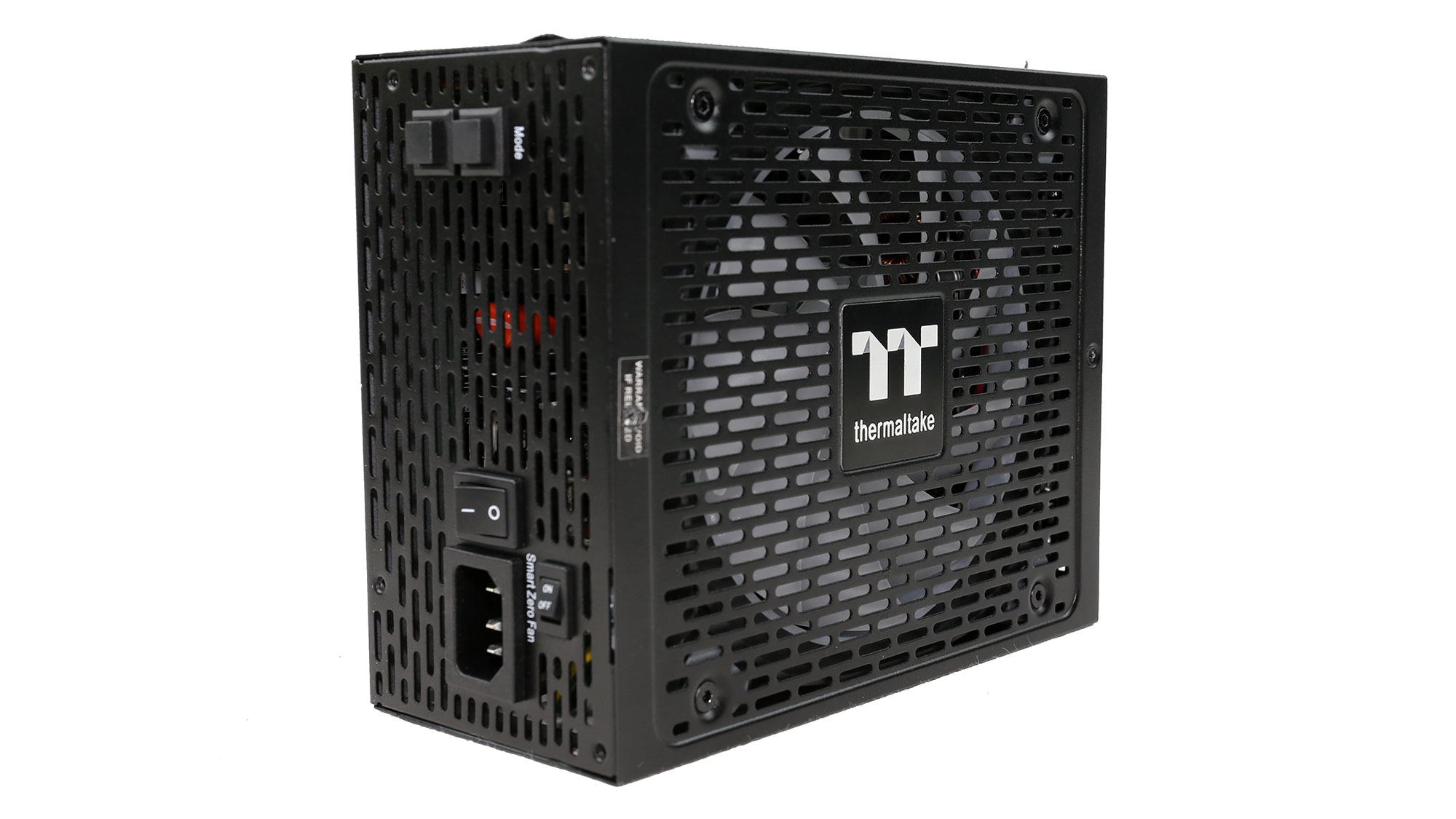
PSU Photos
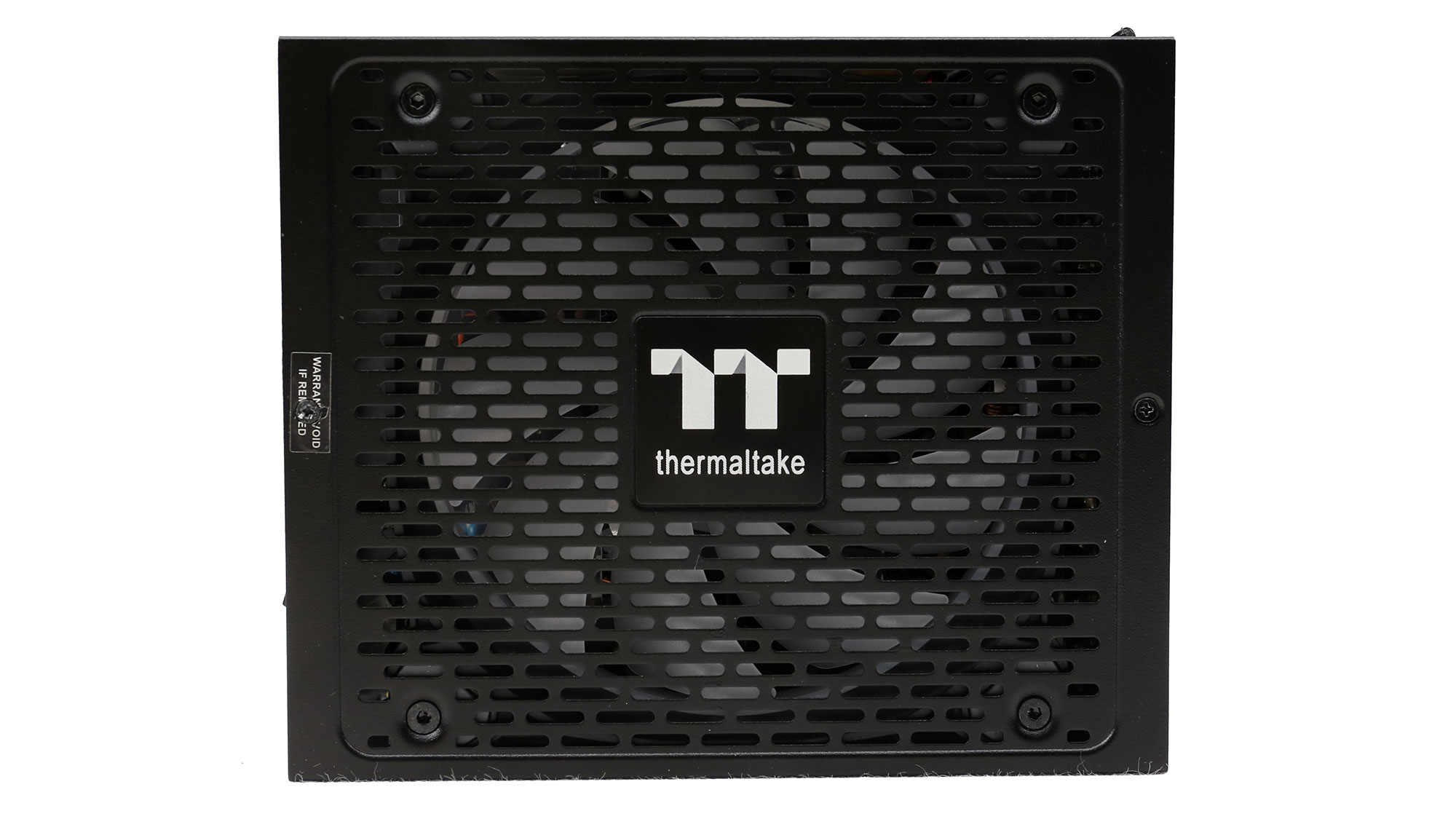

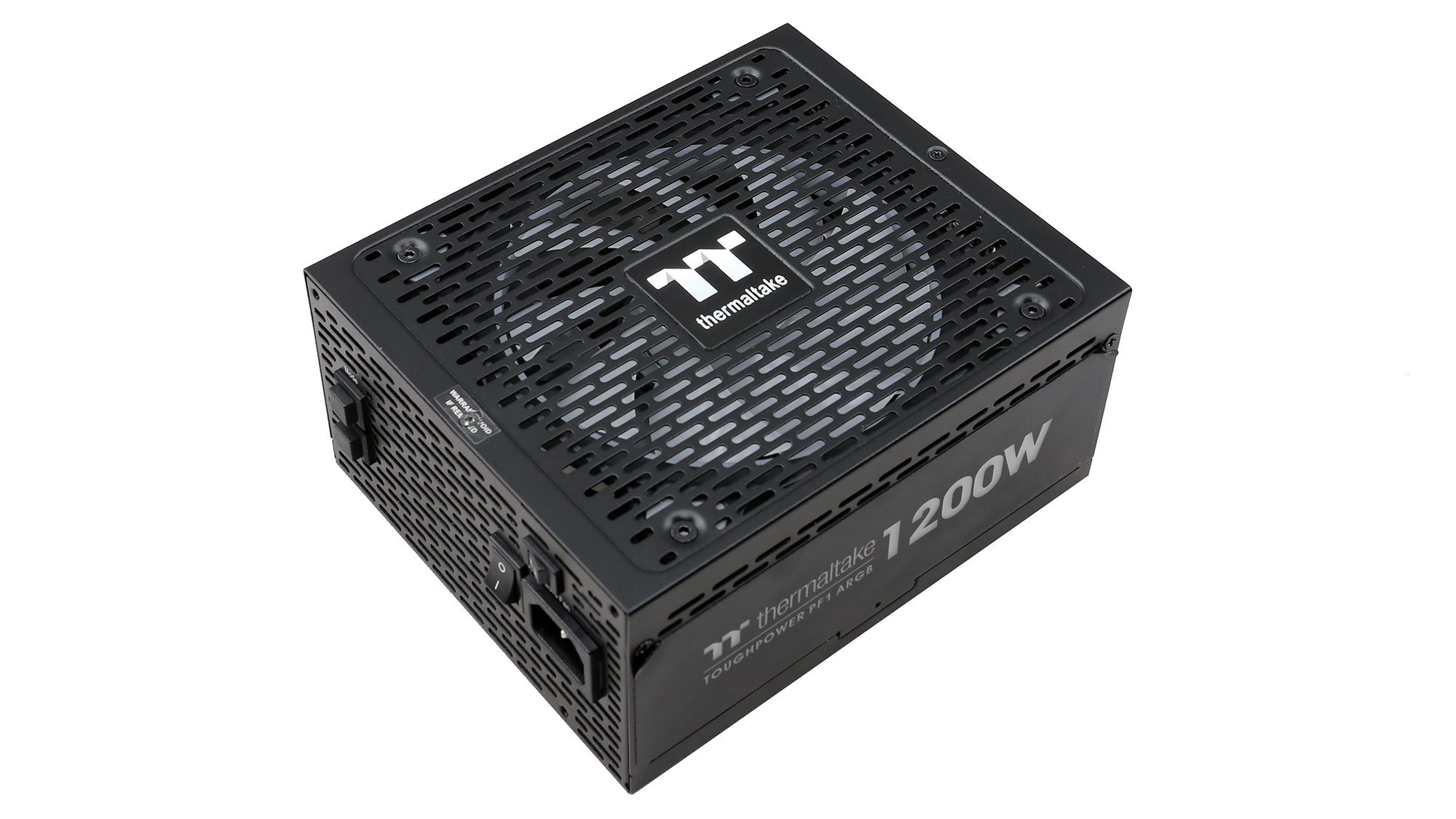

Cables and Connectors
| Modular Cables | Cable Count | Connector Count (Total) | Gauge | In Cable Capacitors |
|---|---|---|---|---|
| ATX connector 20+4 pin (600mm) | 1 | 1 | 16AWG | No |
| 8 pin EPS12V (650mm) | 1 | 1 | 16AWG | No |
| 4+4 pin EPS12V (650mm) | 1 | 1 | 16AWG | No |
| 6+2 pin PCIe (500mm+150mm) | 4 | 8 | 16-18AWG | No |
| SATA (500mm+150mm+150mm+150mm) | 3 | 12 | 18AWG | No |
| 4 pin Molex (500mm+150mm+150mm+150mm) | 2 | 8 | 18AWG | No |
| FDD Adapter (+100mm) | 1 | 1 | 22AWG | No |
| ARGB Sync Cable (+800mm) | 1 | 1 | 26AWG | No |
| AC Power Cord (1420mm) - C13 coupler | 1 | 1 | 16AWG | - |
The amount of provided cables and connectors is vast since this is a 1200W power supply. Moreover, all cables have sufficient length, and the distance between the peripheral connectors is adequate, at 150mm. Finally, as expected, the ATX, EPS and PCIe connectors use thicker, 16AWG gauges, and there are no in-line caps.
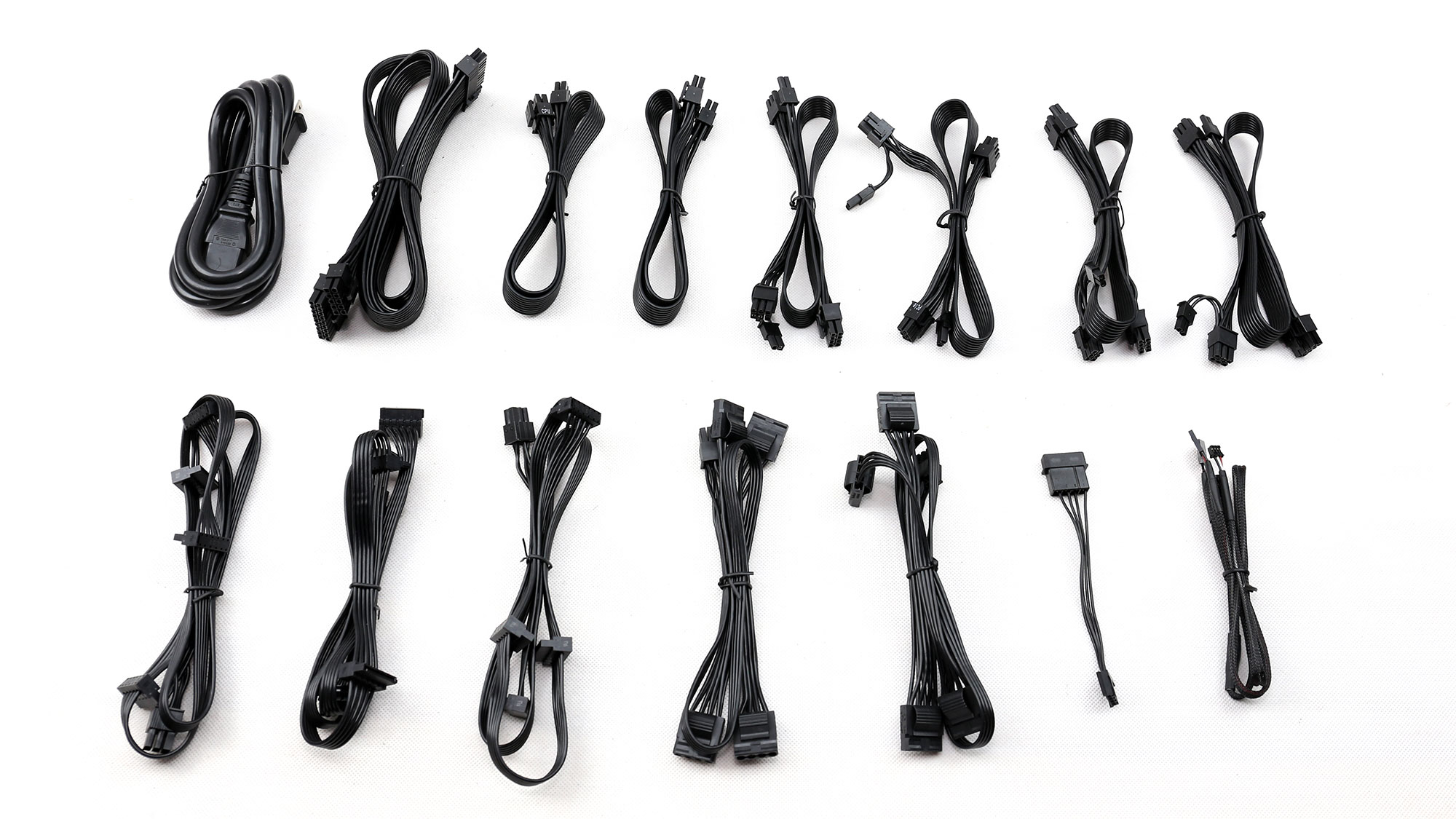
Cable Photos
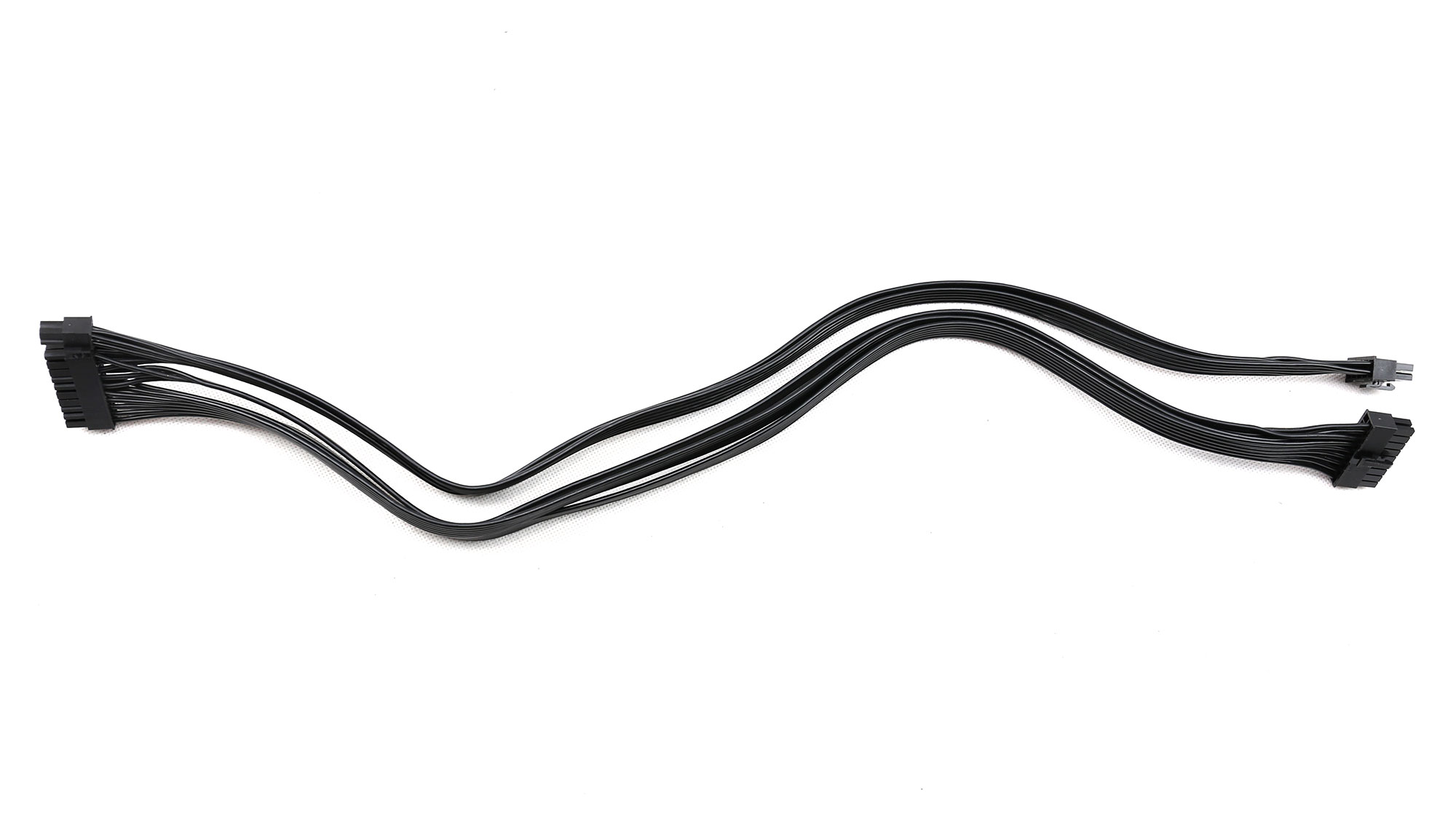
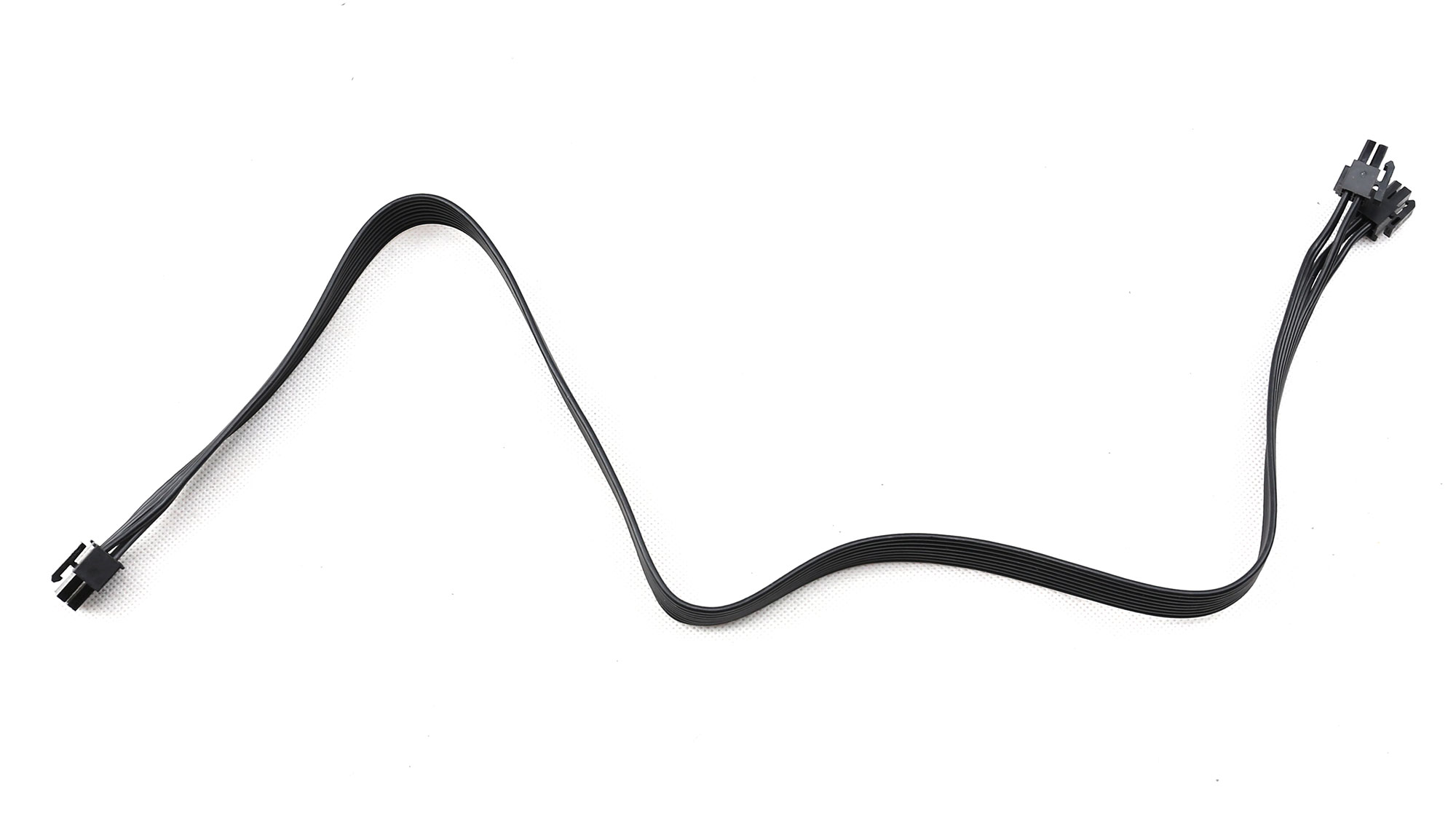
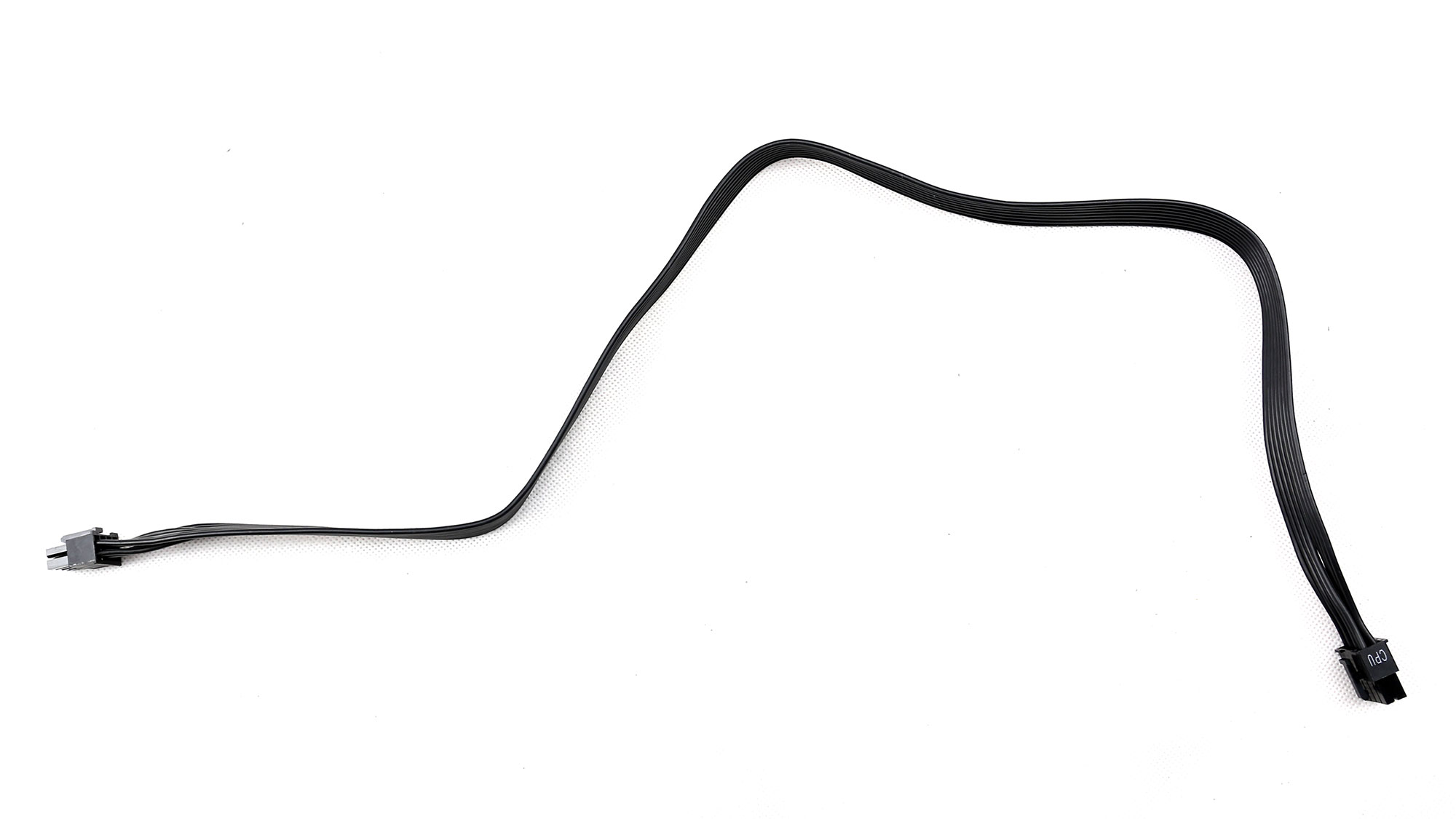
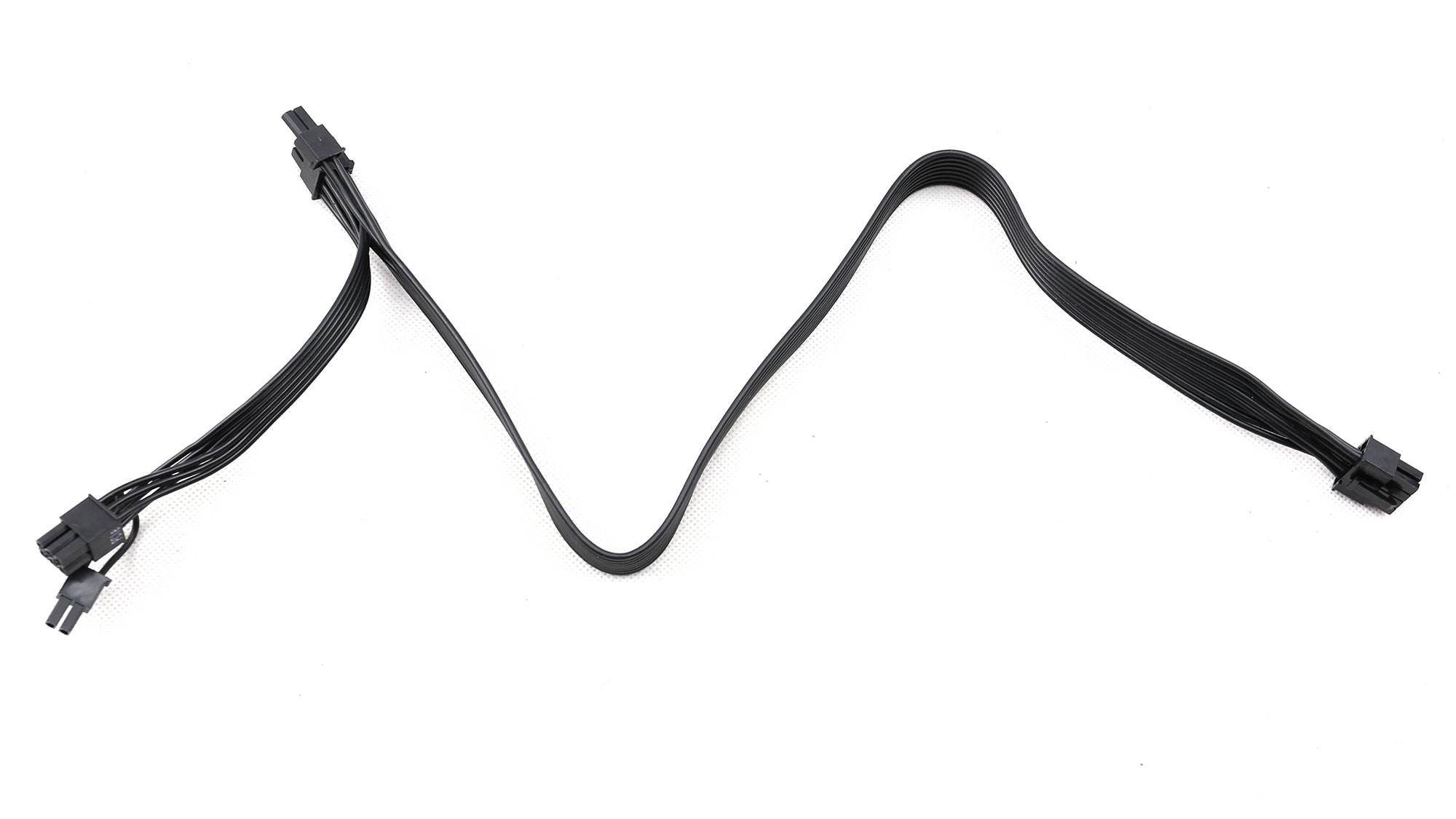


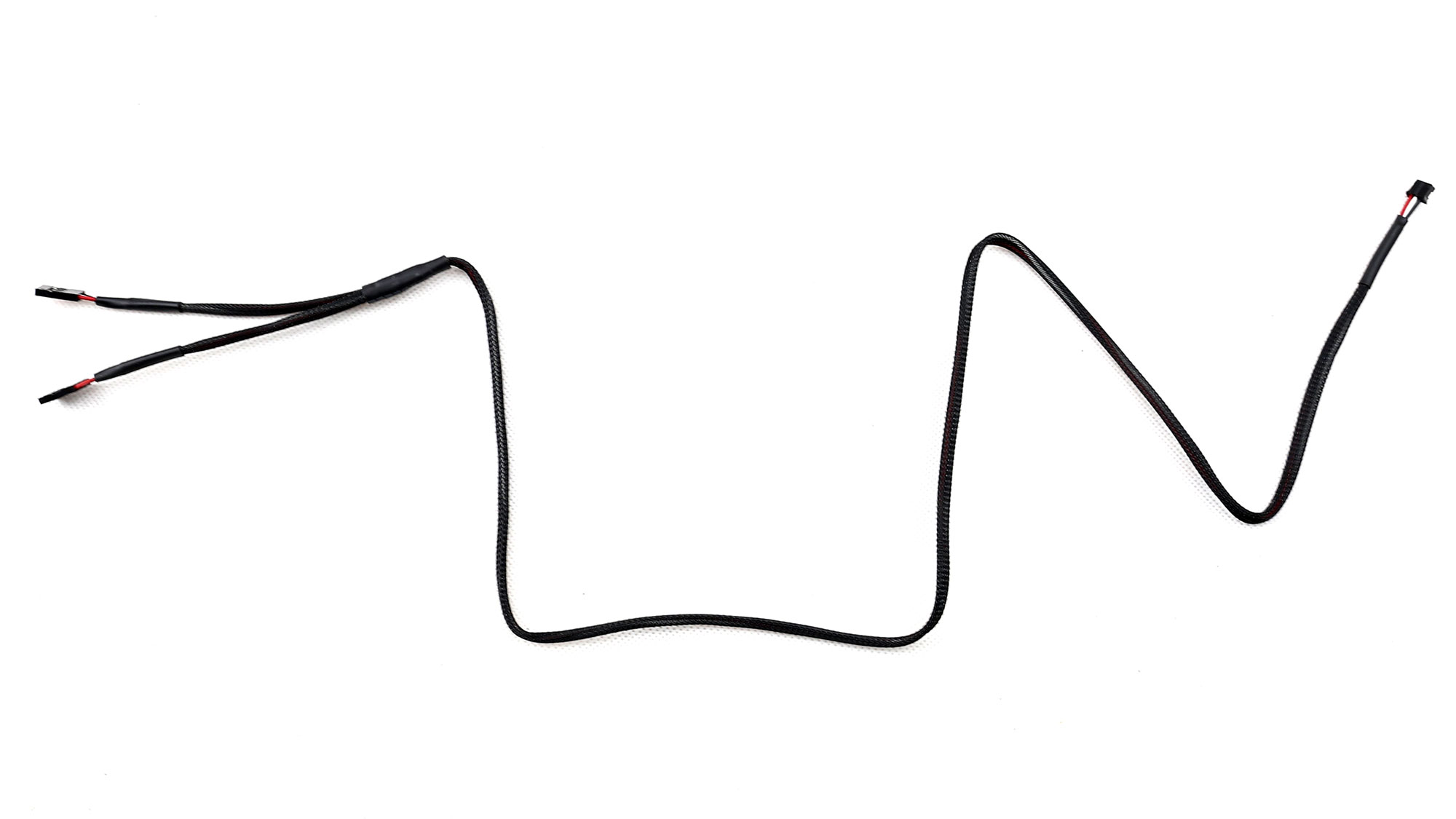
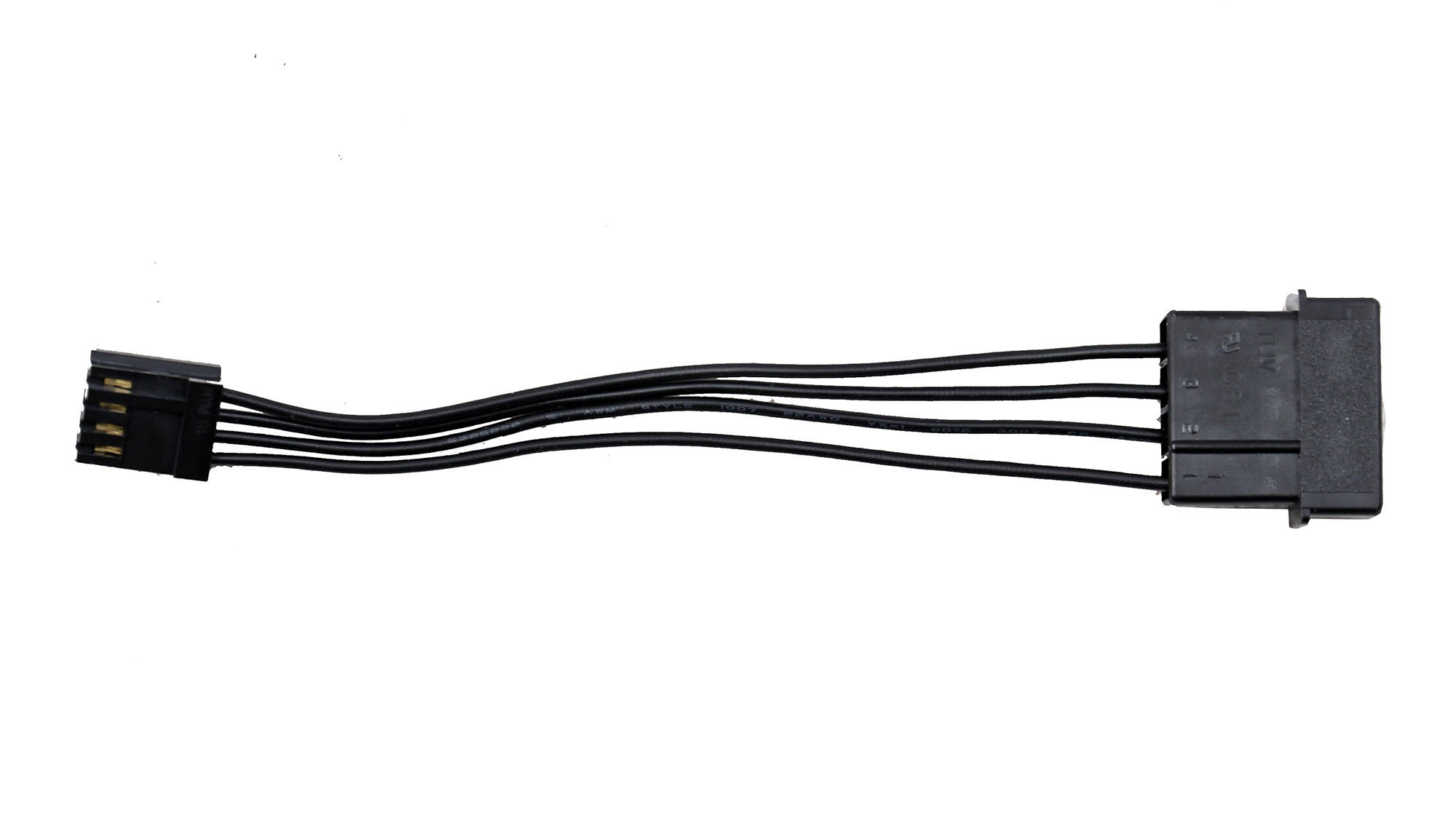
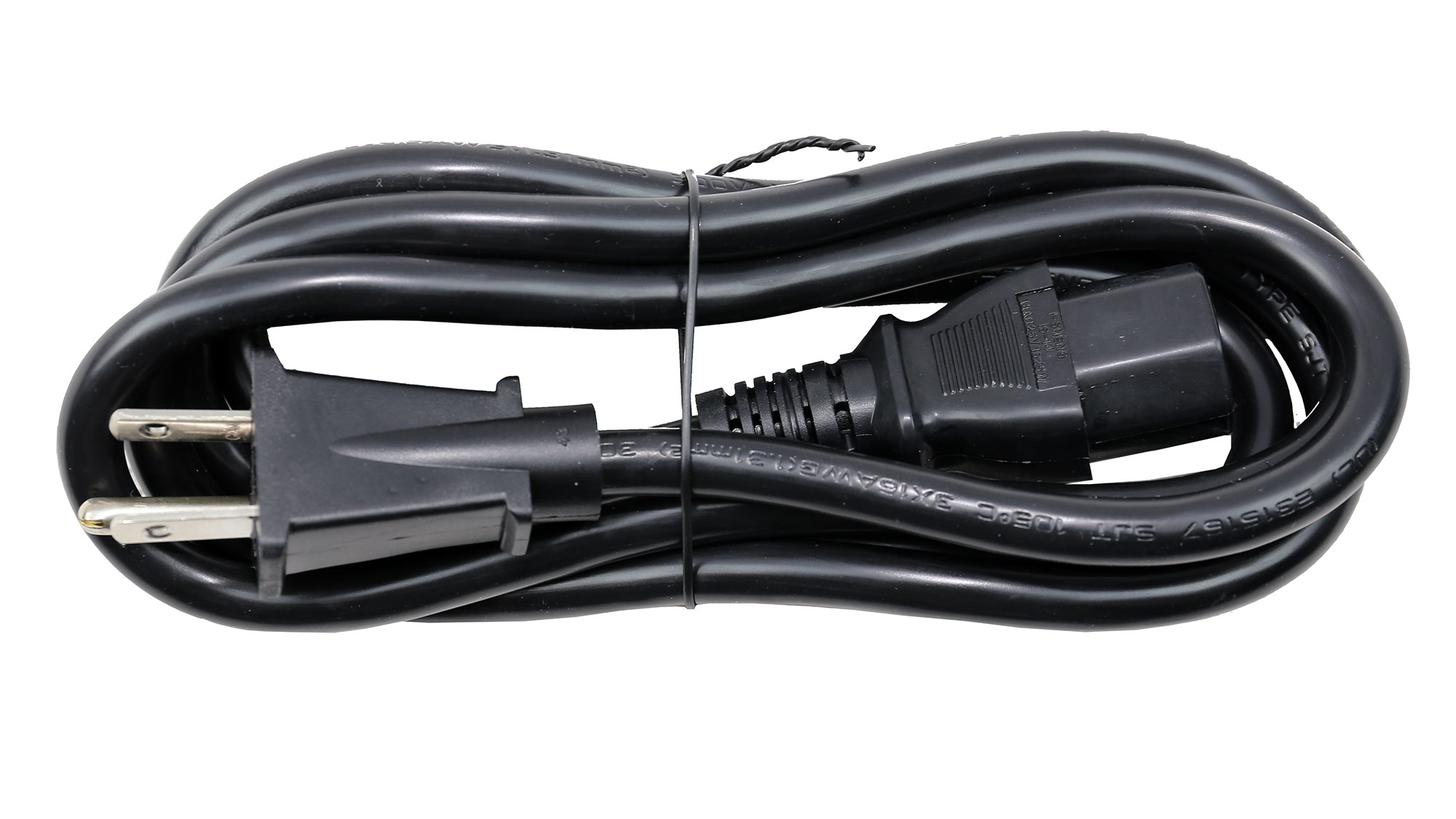
Component Analysis
We strongly encourage you to have a look at our PSUs 101 article, which provides valuable information about PSUs and their operation, allowing you to better understand the components we're about to discuss.
| General Data | Row 0 - Cell 1 |
| Manufacturer (OEM) | CWT |
| PCB Type | Double Sided |
| Primary Side | Row 3 - Cell 1 |
| Transient Filter | 6x Y caps, 2x X caps, 2x CM chokes, 1x MOV |
| Inrush Protection | NTC Thermistor & Relay |
| Bridge Rectifier(s) | 2x HY Electronic GBJ2506P (600V, 25A @ 100°C) |
| APFC MOSFETS |
2x Toshiba TK25A60X (600V, 25A @ 153°C, 0.125Ohm), 1x Sync Power SPN5003 FET (for reduced no-load consumption) |
| APFC Boost Diode |
2x CREE C3D10060A (600V, 10A @ 153°C) |
| Hold-up Cap(s) | 2x Nippon Chemi-Con (400V, 680uF each or 1,360uF combined, 2000h @ 105°C, KMW) |
| Main Switchers | 4x Oriental Semiconductor OSG55R160FZ (550V, 14.5A @ 100°C, 0.16Ohm) |
|
IC Driver |
2x Silicon Labs Si8233BD |
| APFC Controller | Texas Instruments UCD3138A |
| Resonant Controllers | Texas Instruments UCD3138A |
| Topology | Primary side: Interleaved PFC, Full-Bridge & LLC converter Secondary side: Synchronous Rectification & DC-DC converters |
| Secondary Side | Row 15 - Cell 1 |
| +12V MOSFETS | 8x Infineon BSC014N06NS (60V, 100A @ 100°C, 1.45mOhm) |
| 5V & 3.3V | DC-DC Converters:4x UBIQ Semiconductor QM3006D (30V, 57A @ 100°C, 5.5mOhm) |
| Filtering Capacitors |
Electrolytics: 6x Nippon Chemi-Con (4-10,000h @ 105°C, KY), 4x Nippon Chemi-Con (105°C, W), 1x Nippon Chemi-Con (1-5,000h @ 105°C, KZE) |
| Supervisor IC | Weltrend WT7502 ( OVP, UVP, SCP, PG) |
| Fan Model | Thermaltake TT-1425 (Hong Sheng OEM, A1425S12S-2, 140mm, 12V, 0.70A, Hydrodynamic Bearing, RGB LED Lighting Fan) |
| 5VSB Circuit | Row 21 - Cell 1 |
| Rectifier | IPS ISD04N65A & PS1045L SBR (45V, 10A) |
| Standby PWM Controller | On-Bright OB5282 |
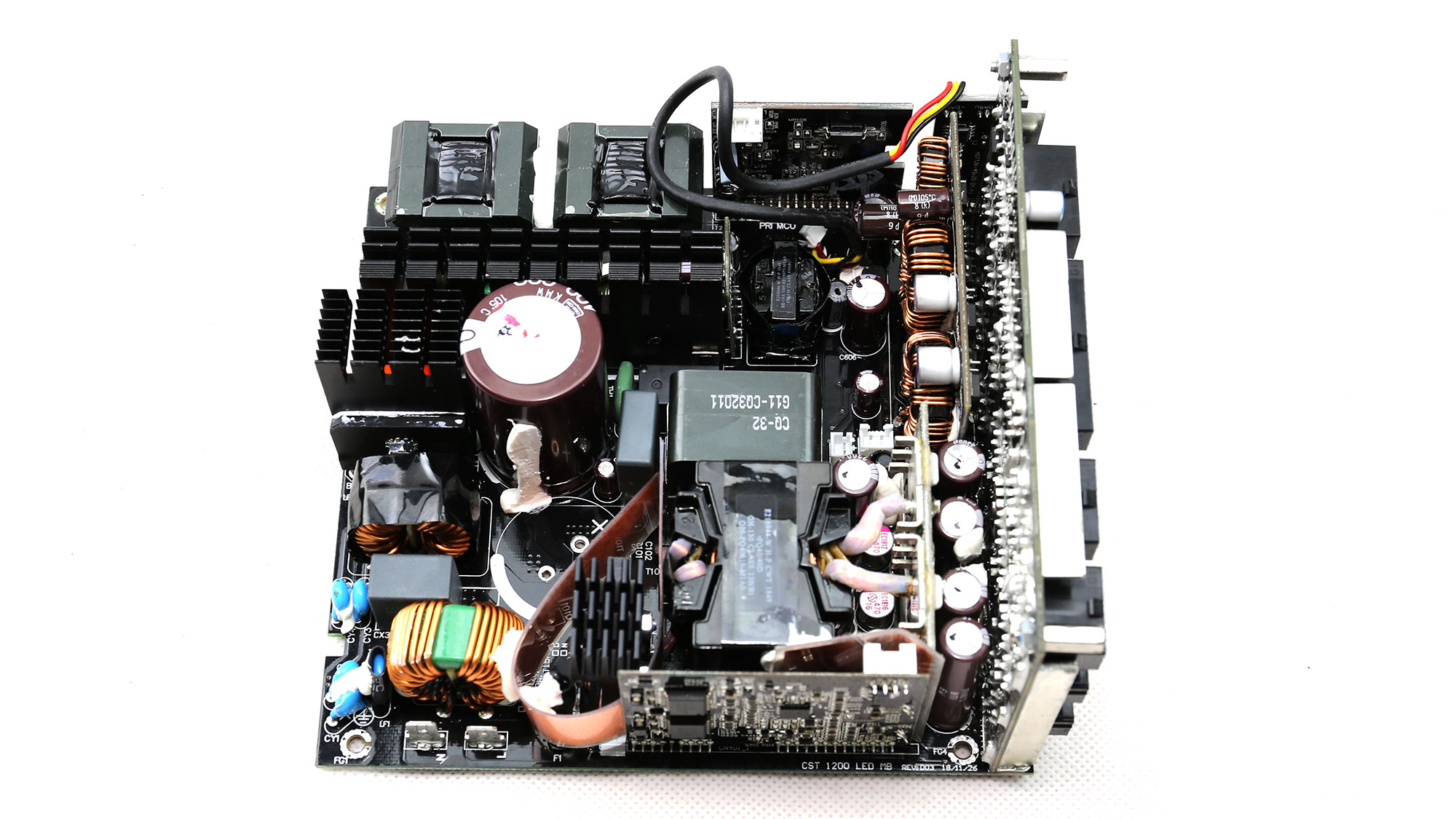
Parts Photos
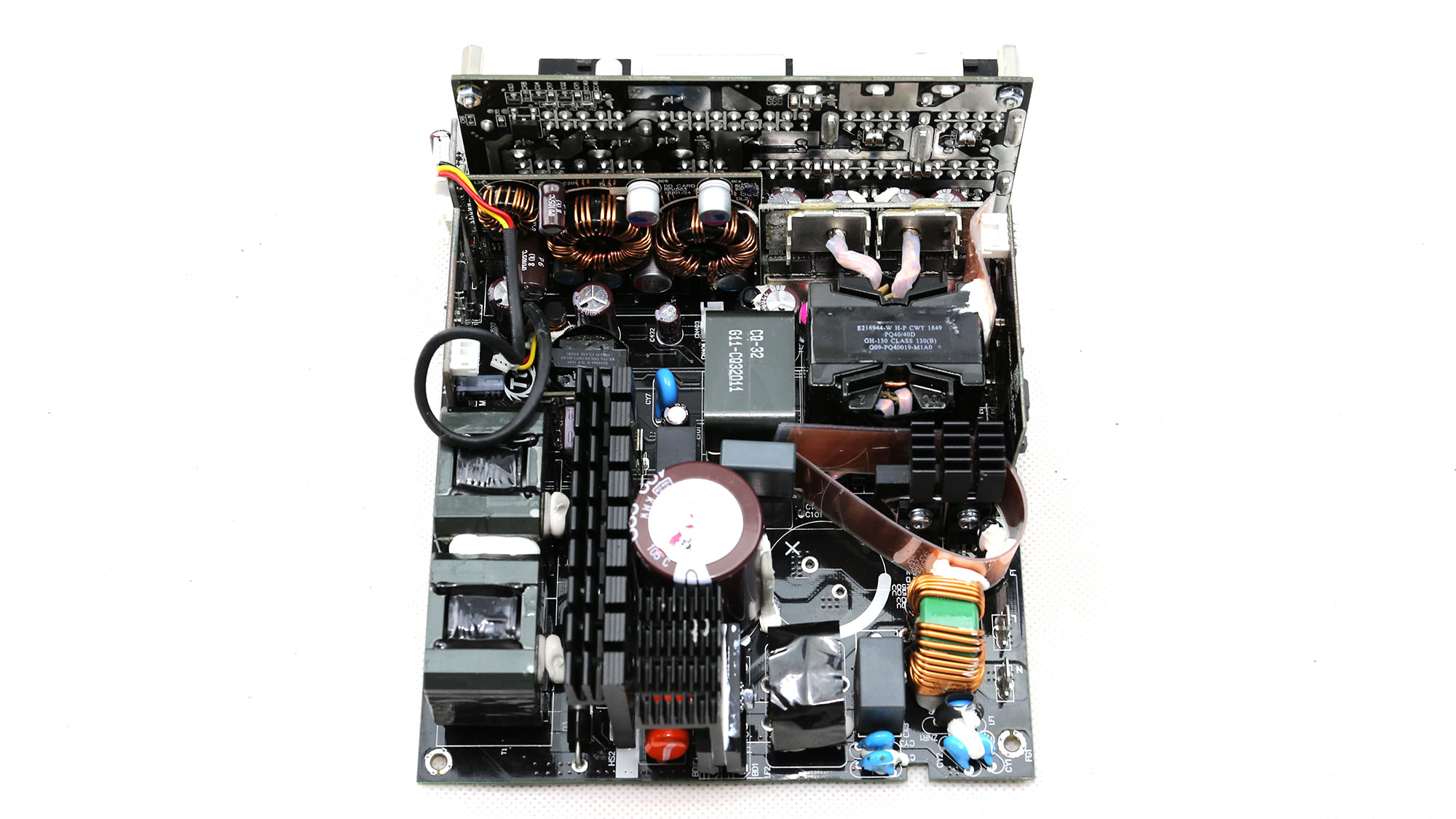
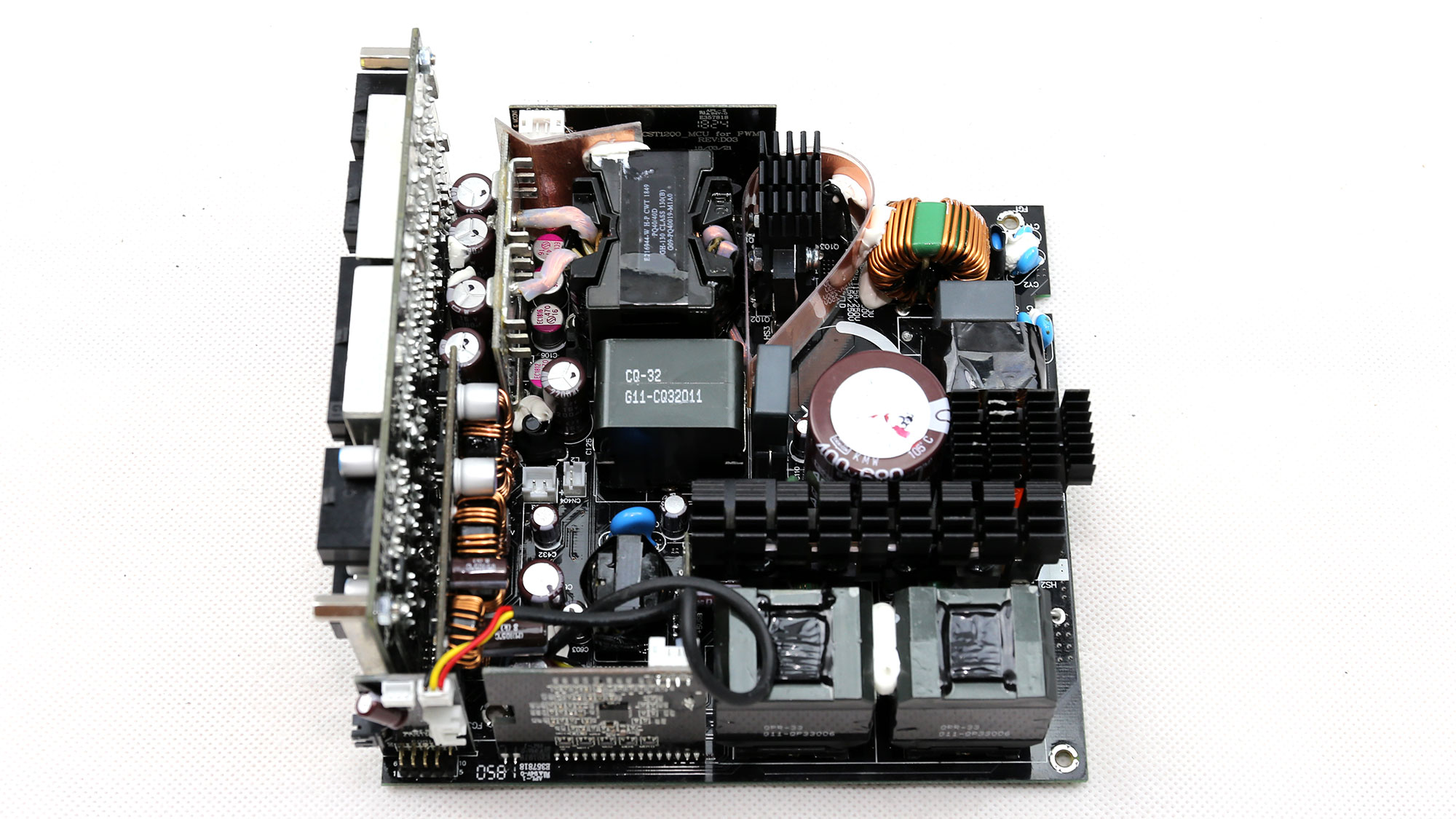
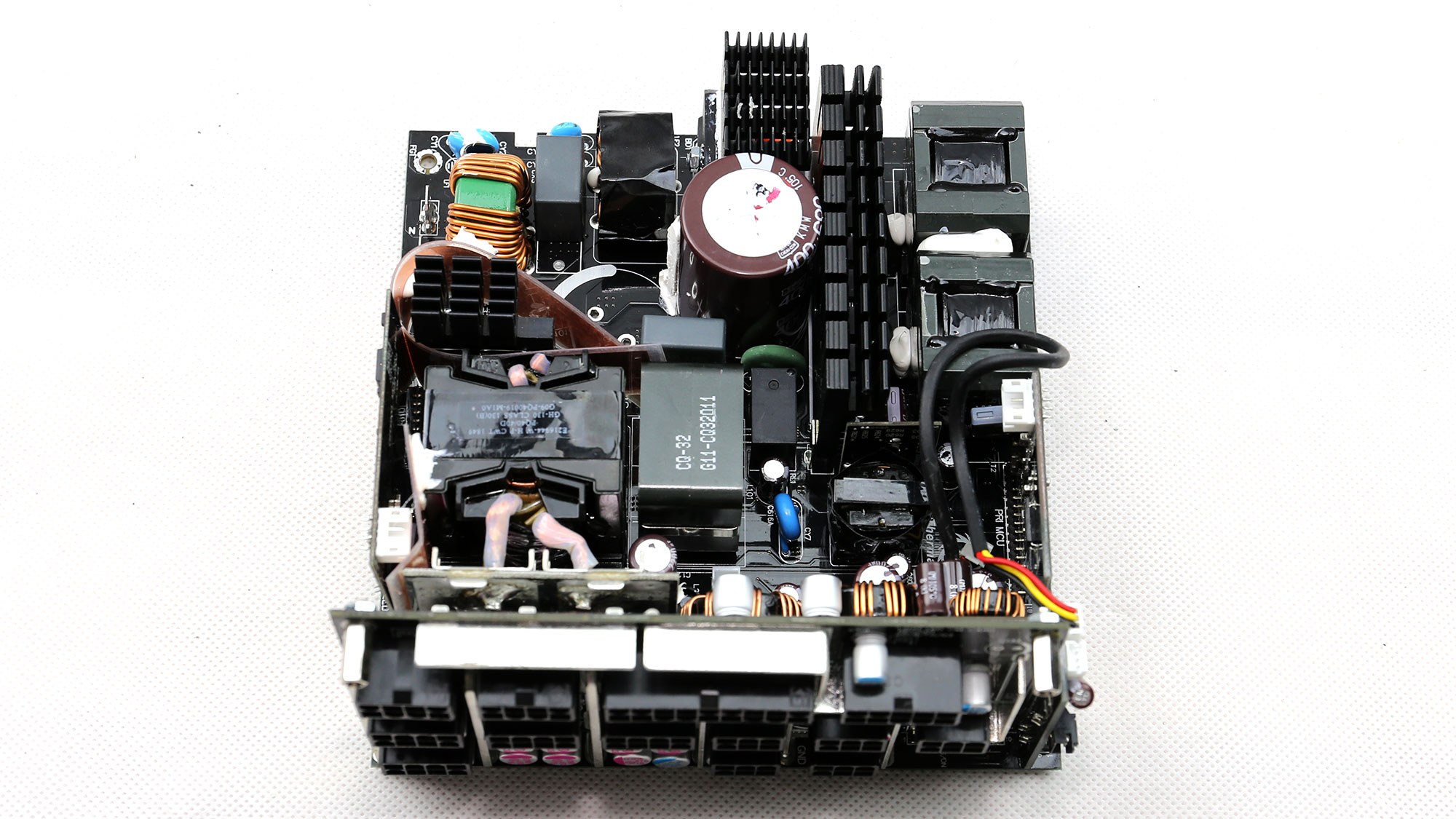

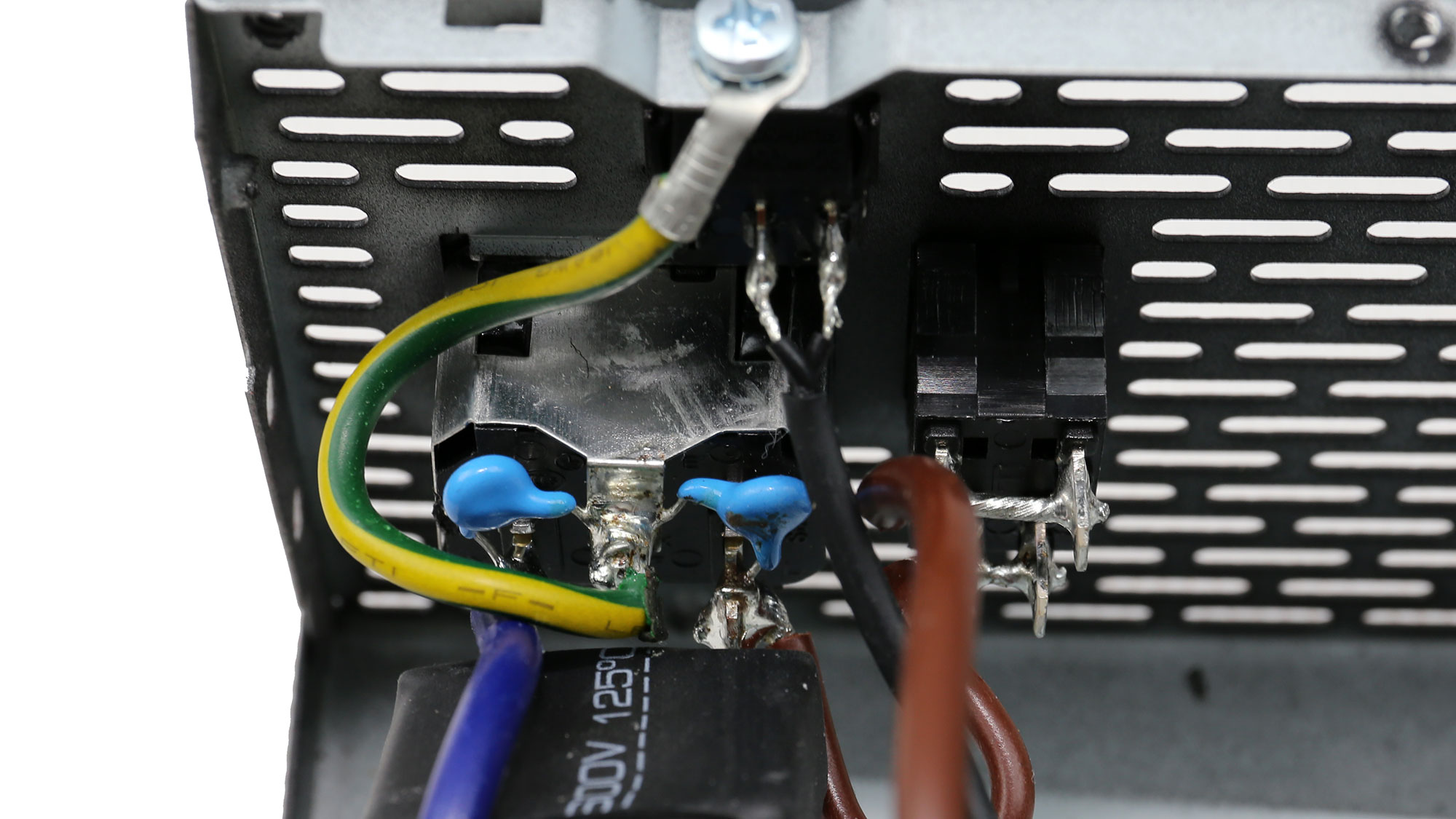



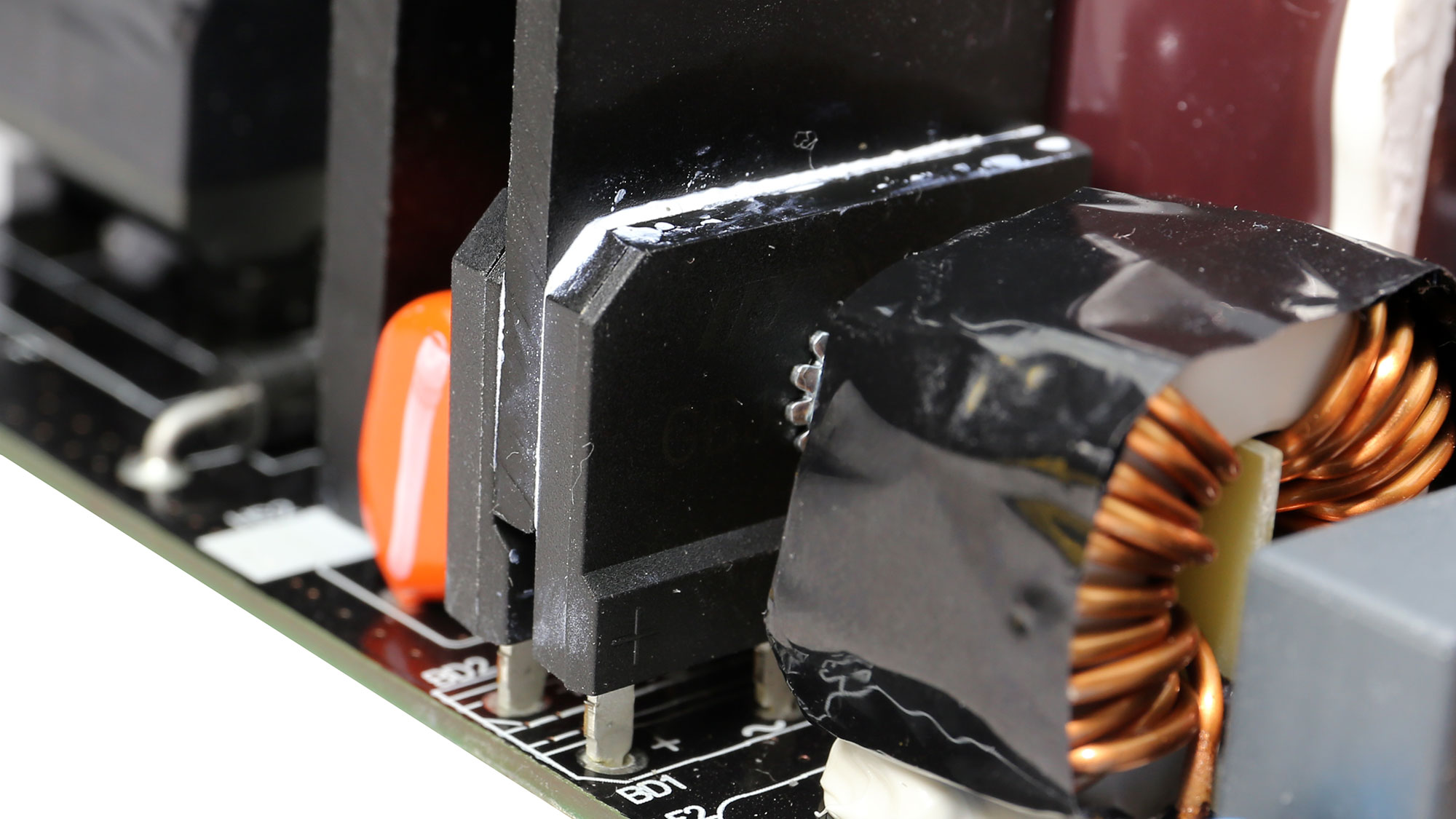

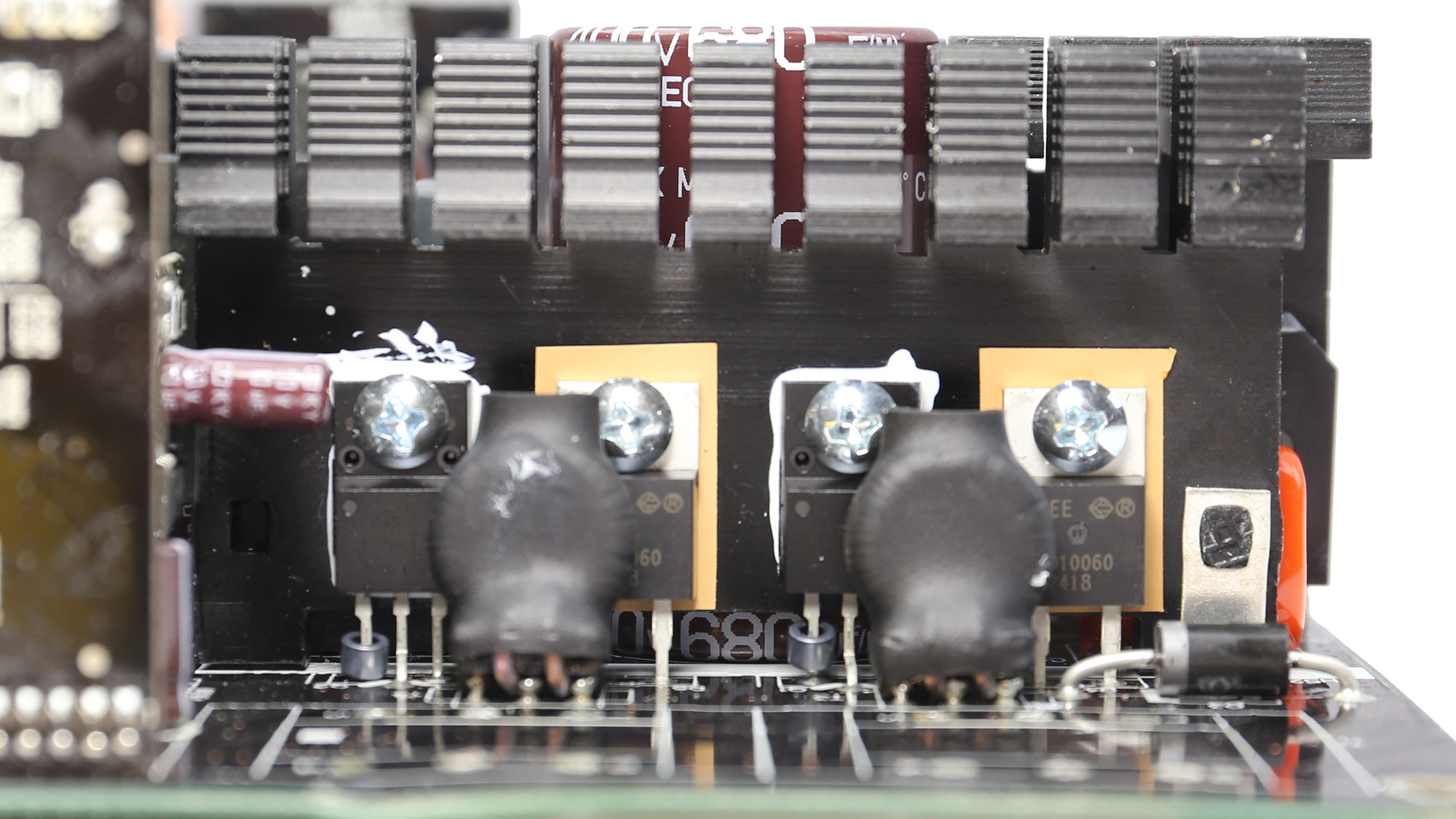
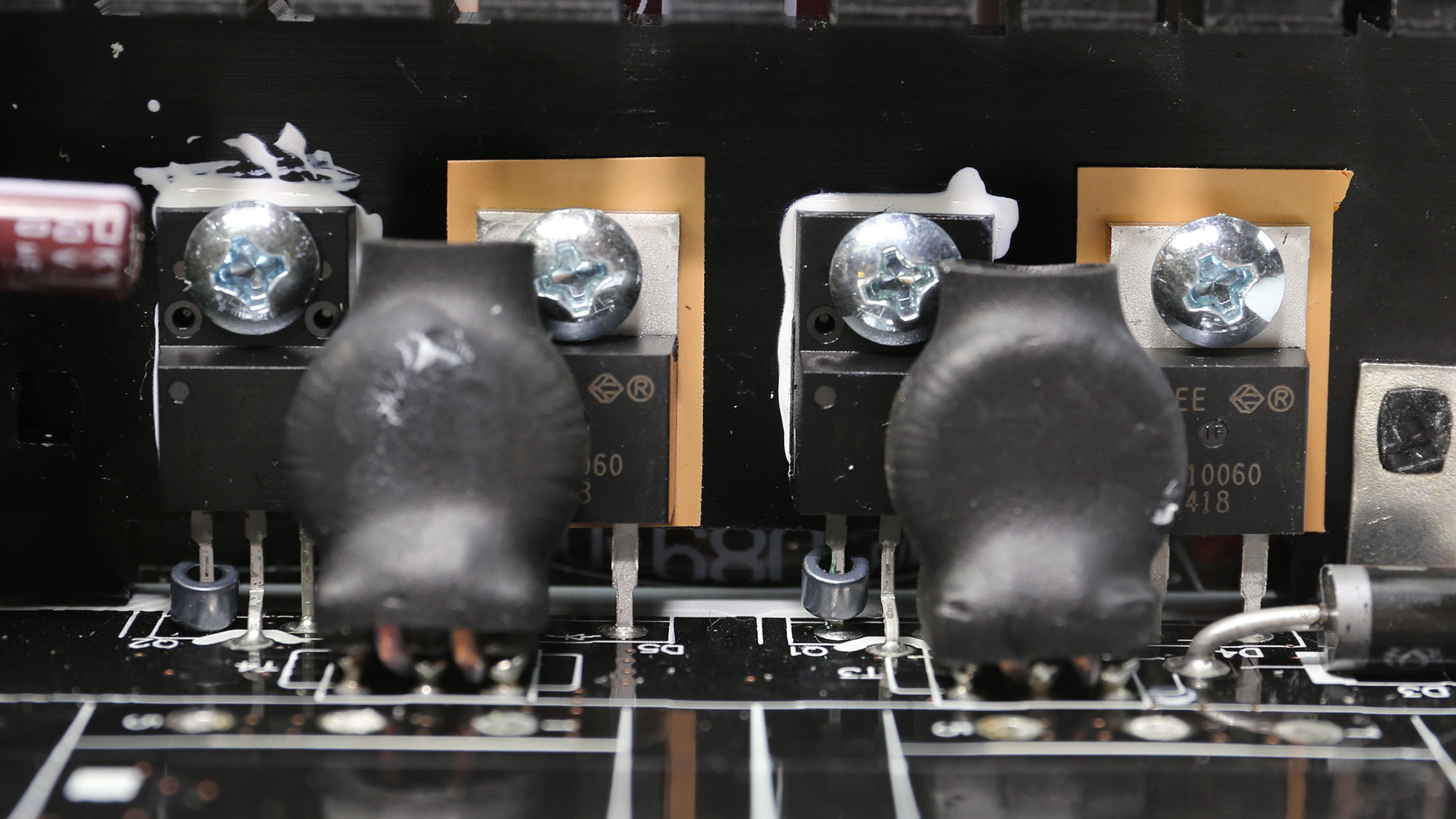
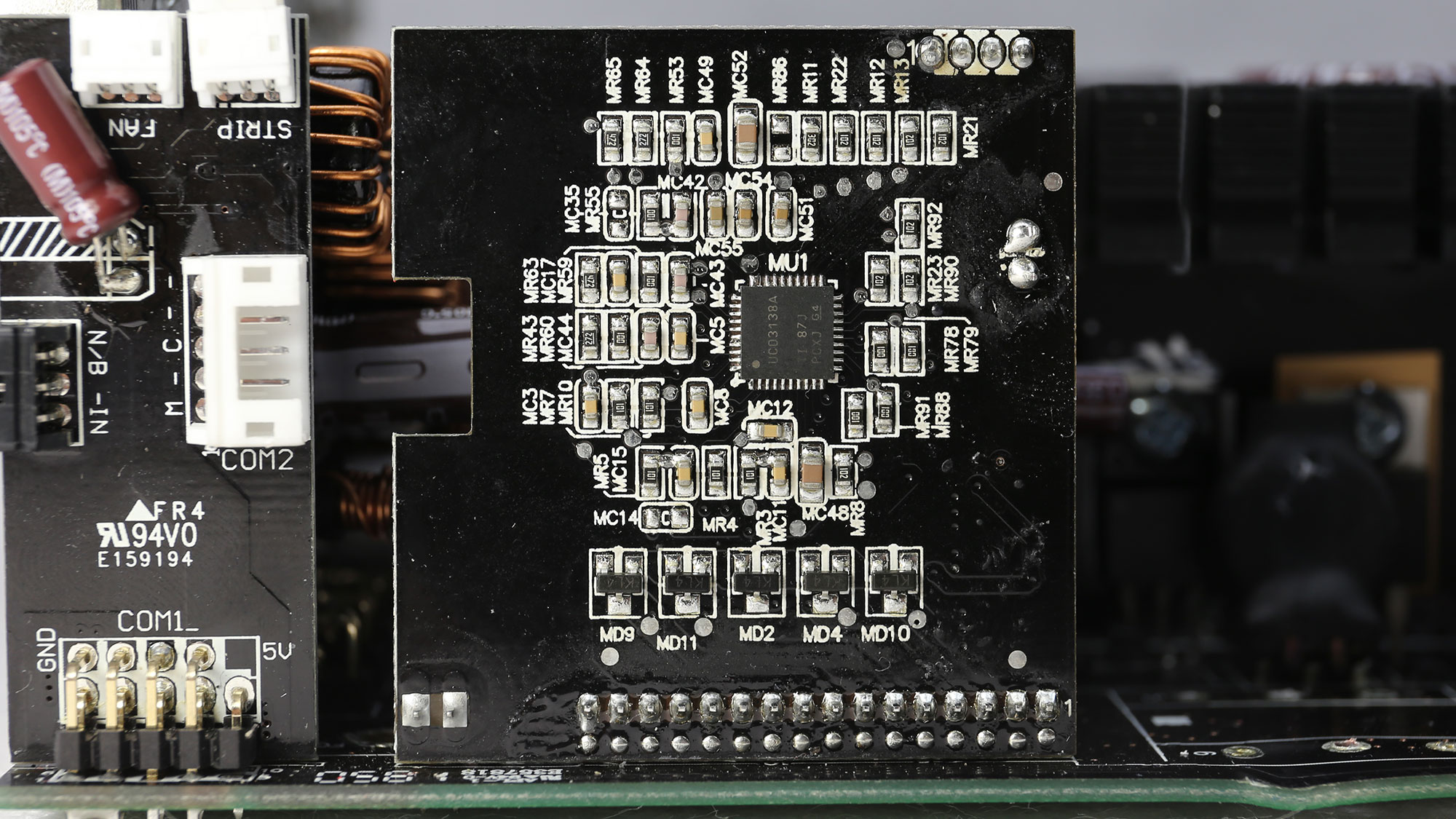

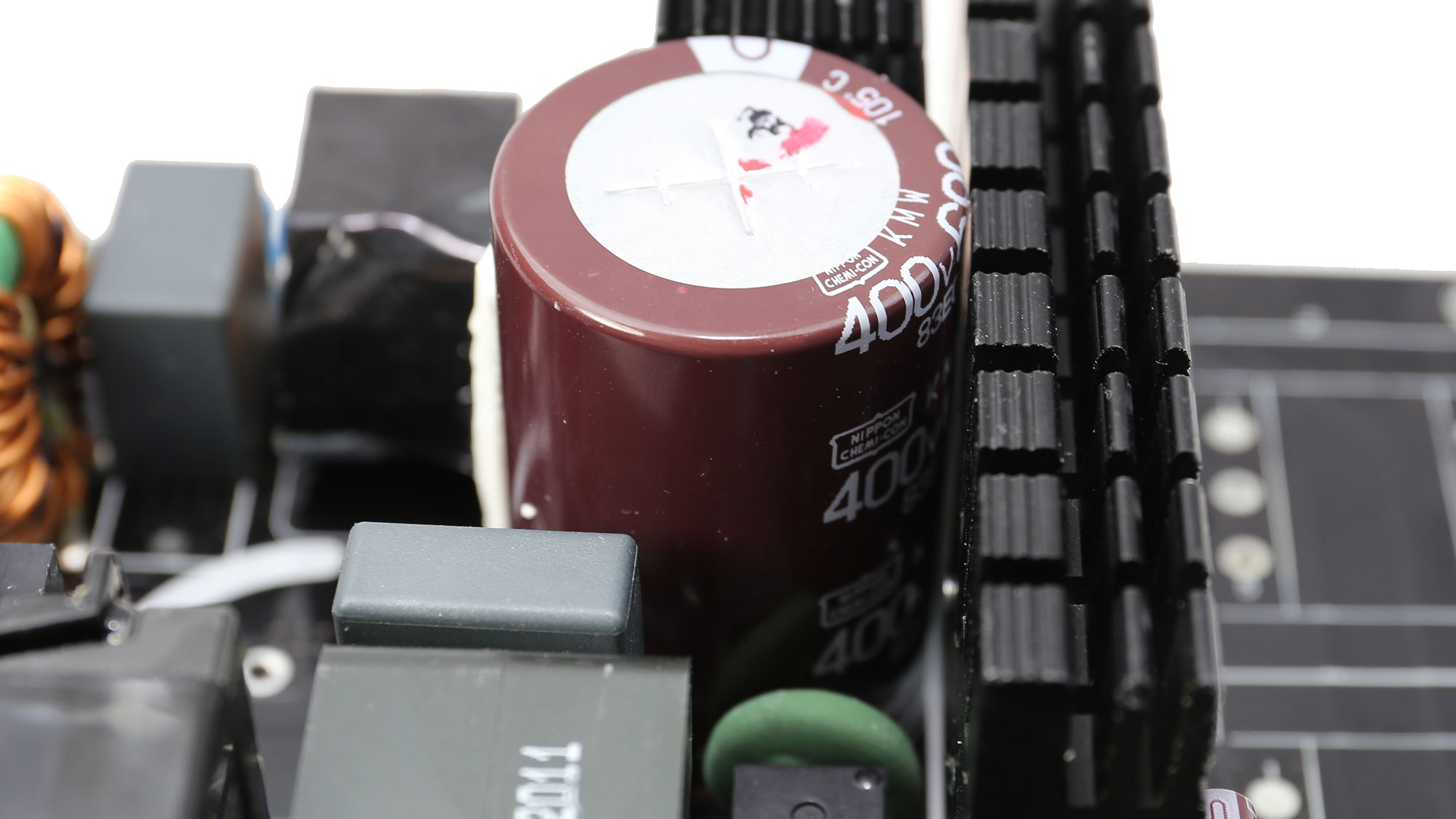
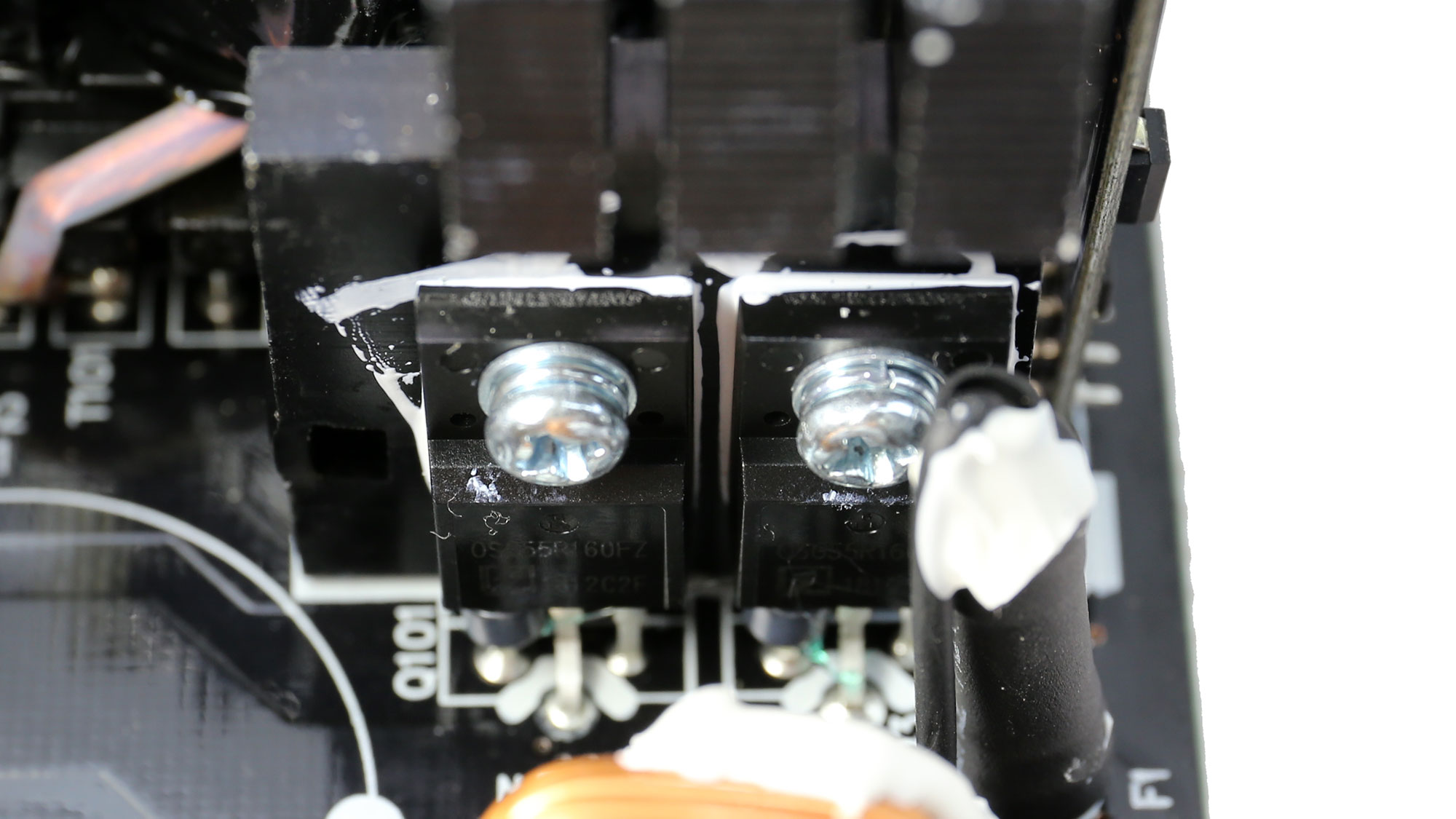

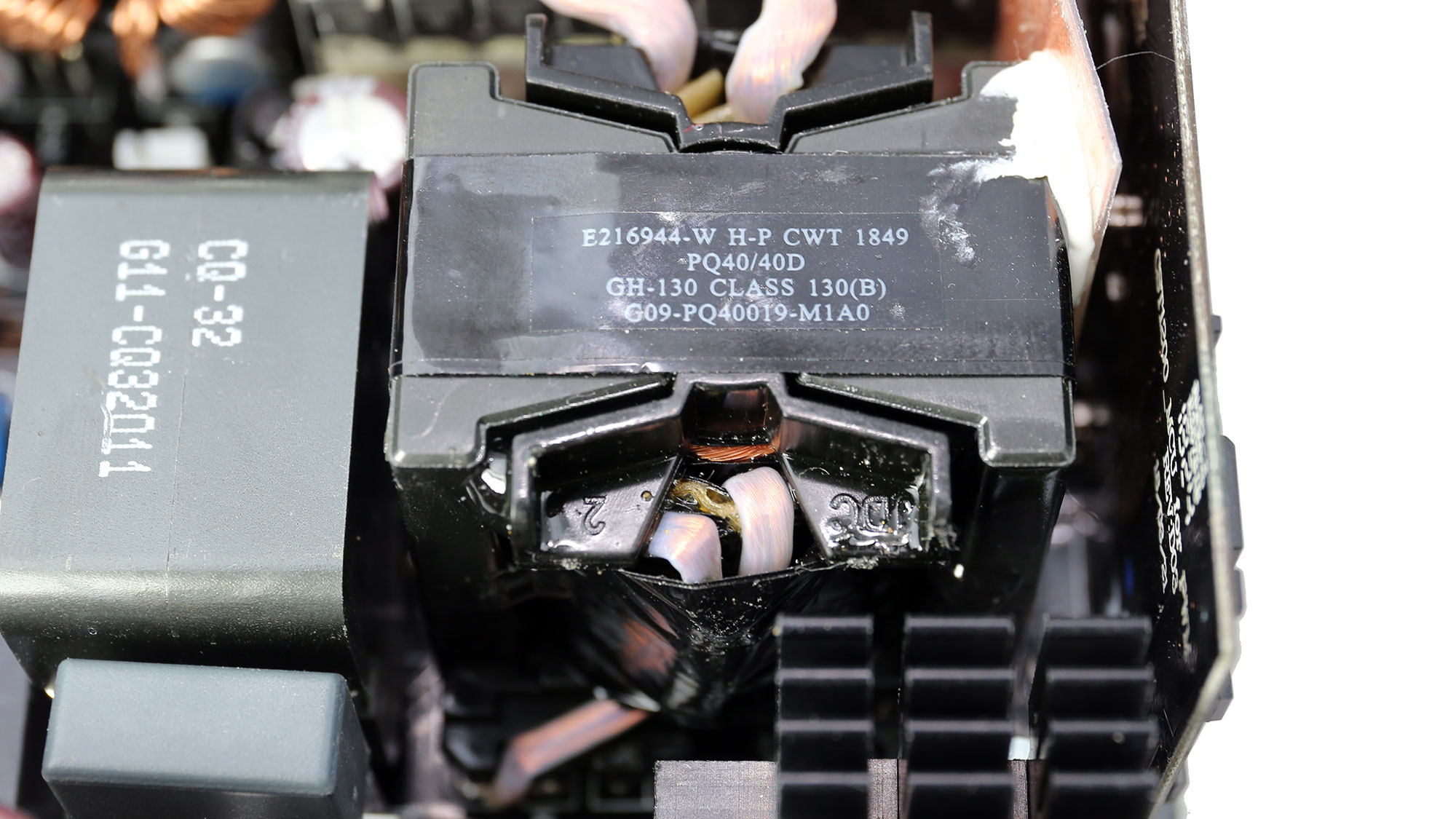
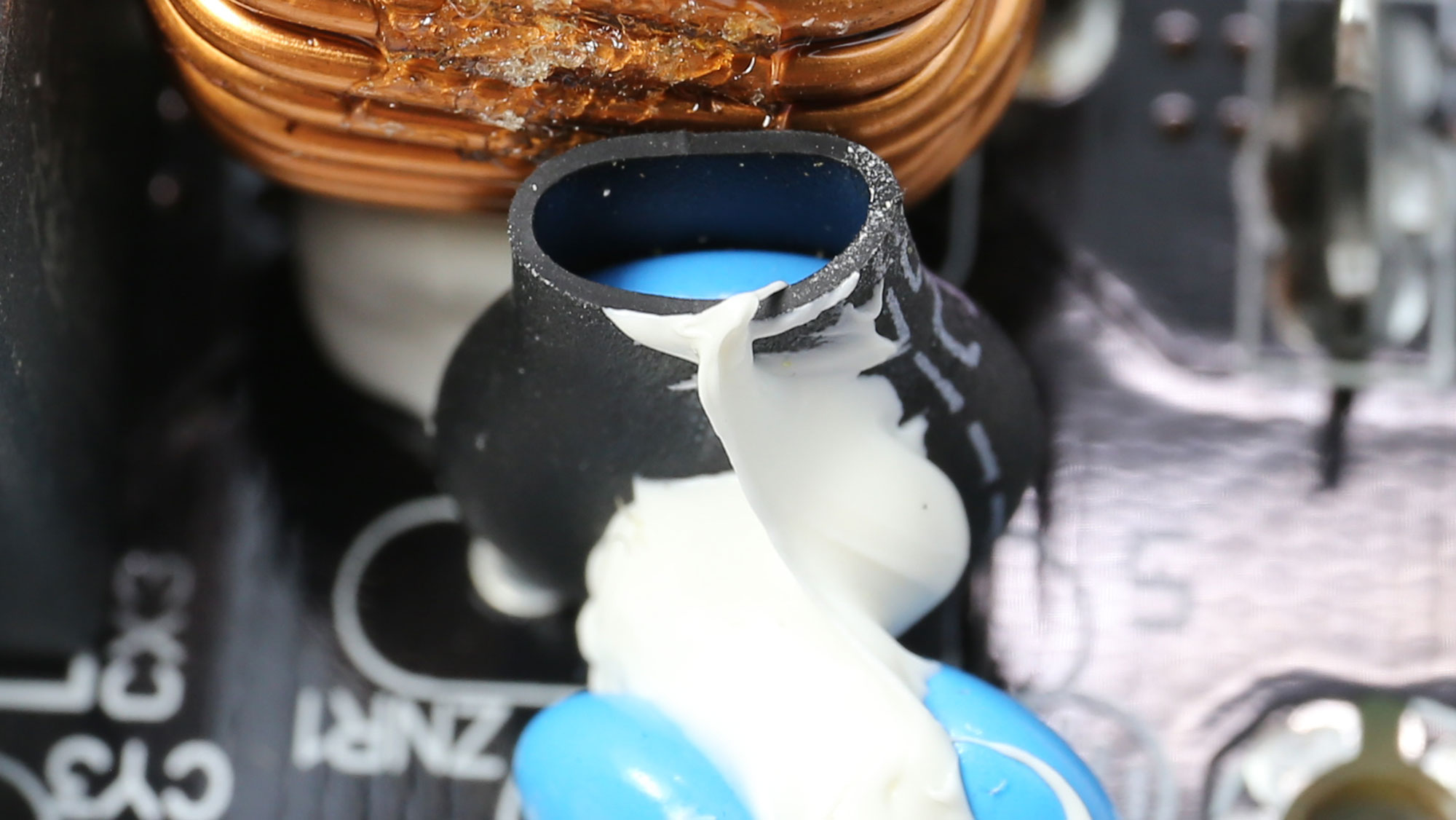
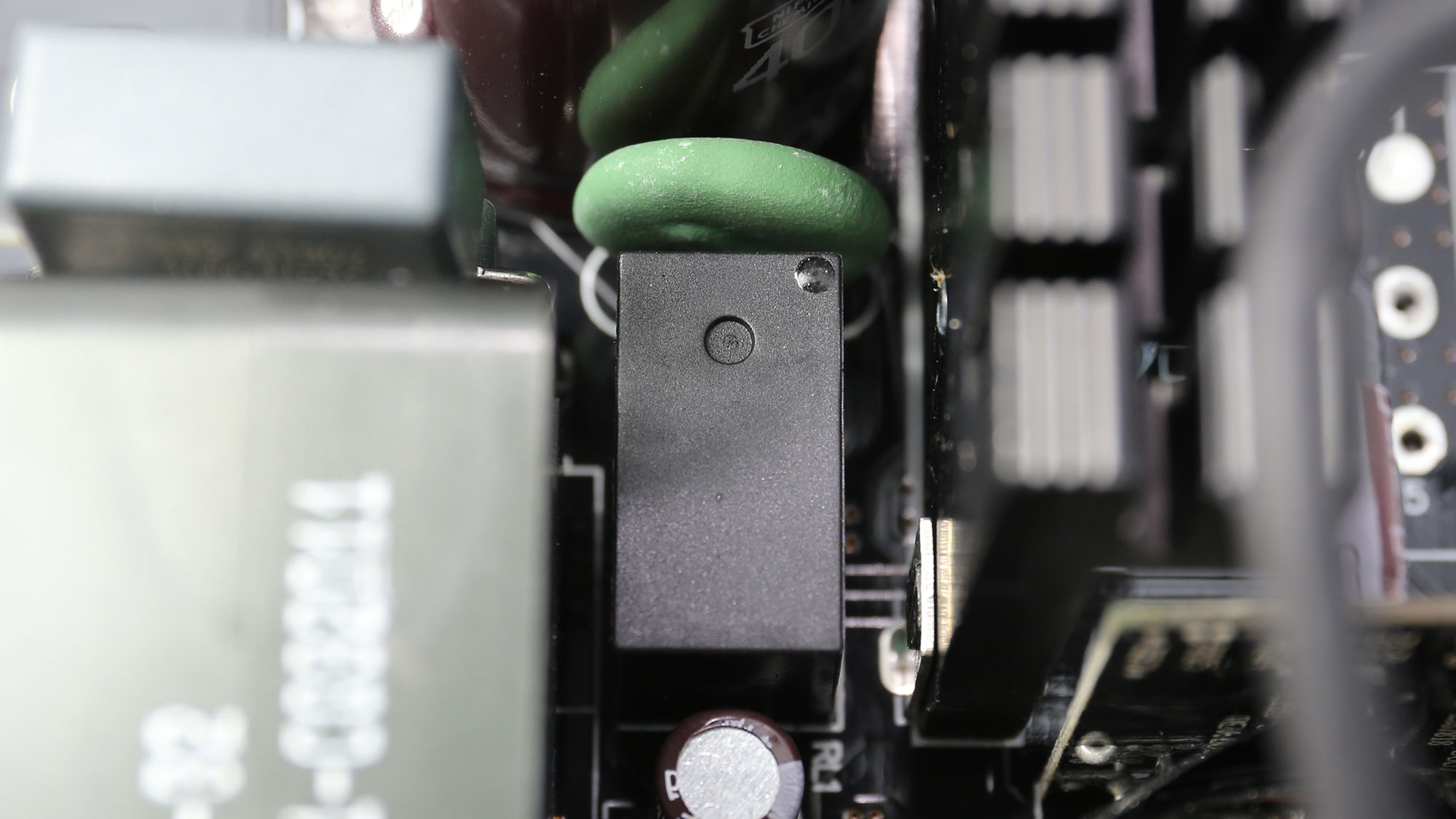
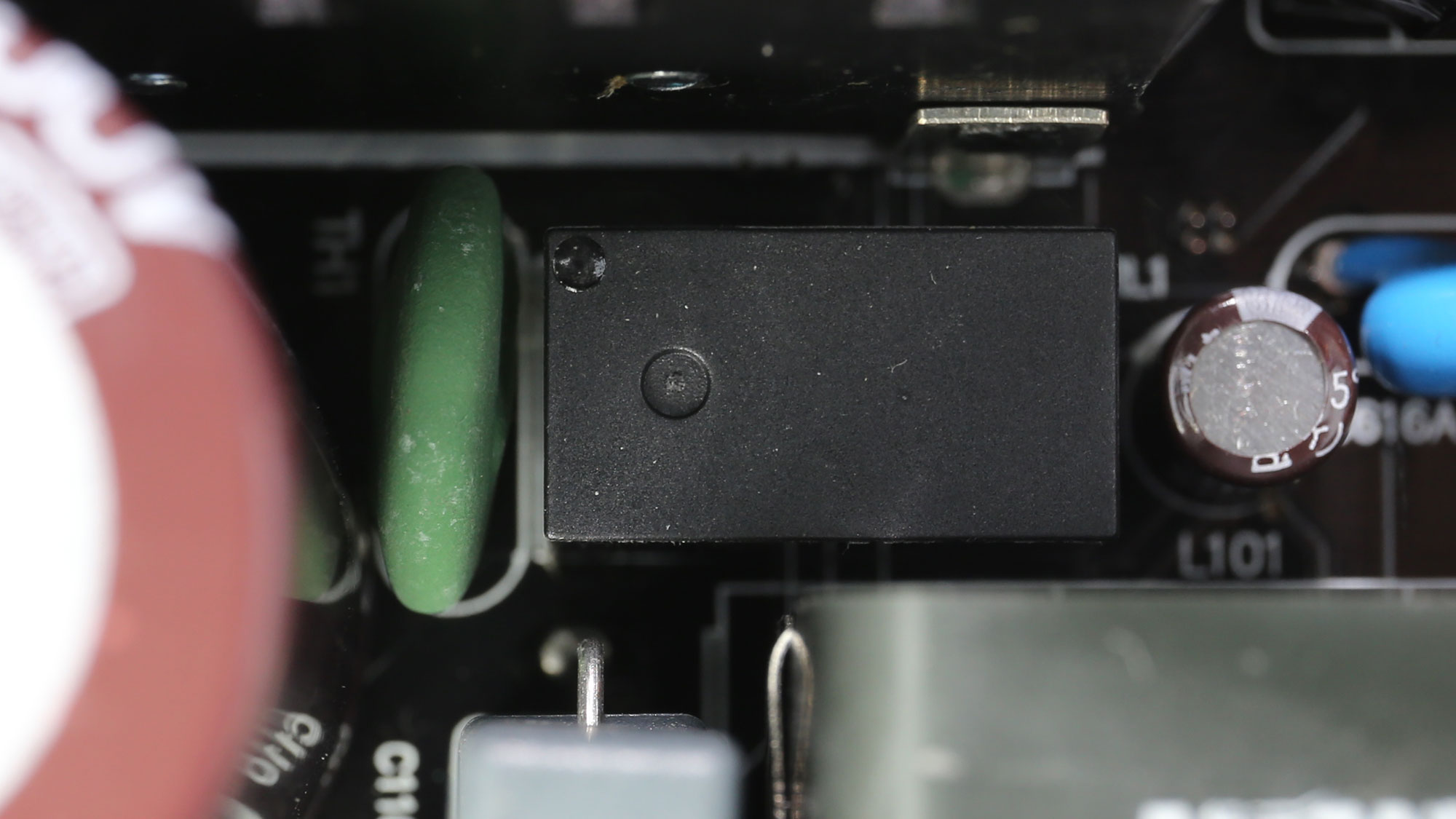
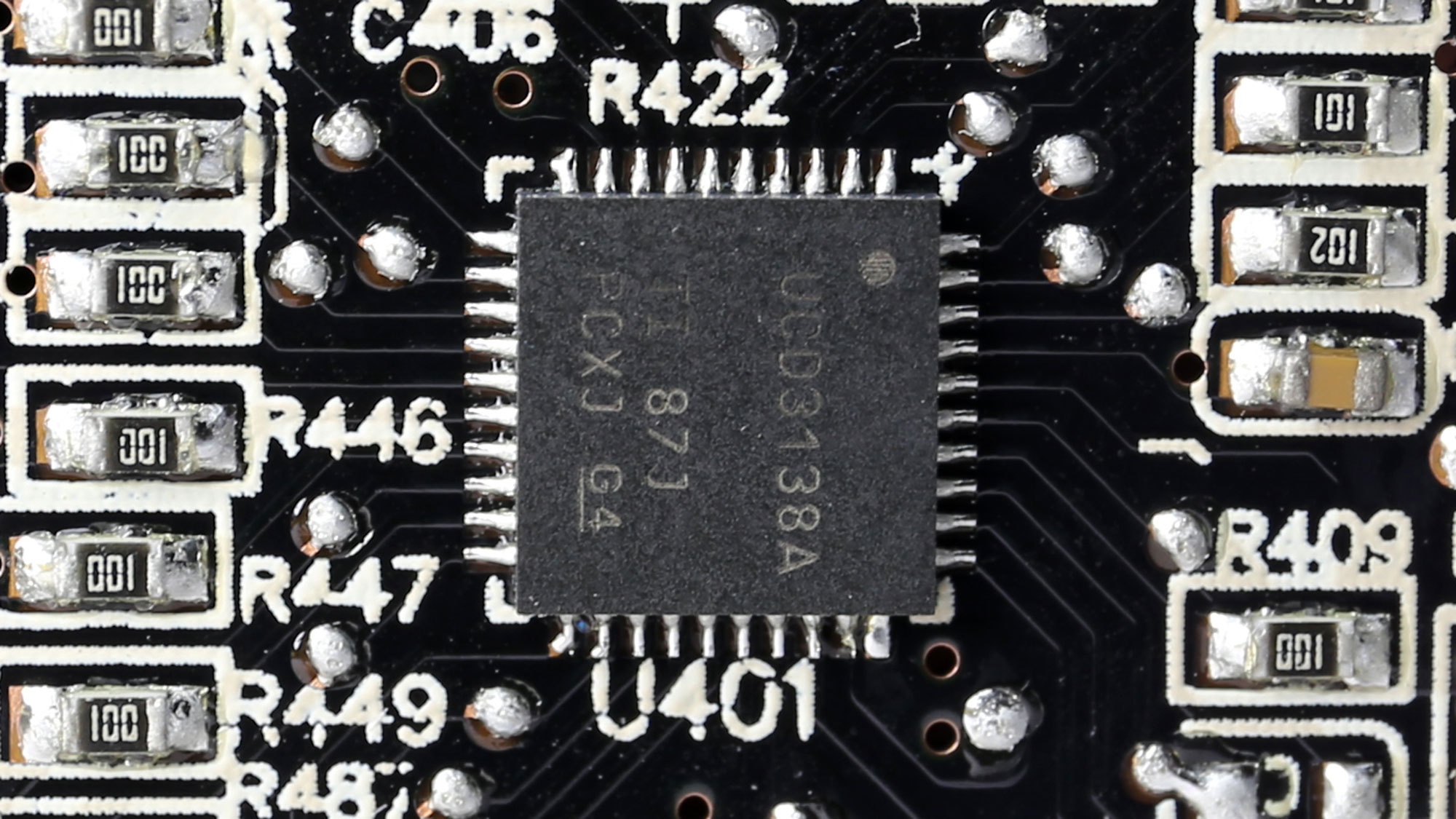


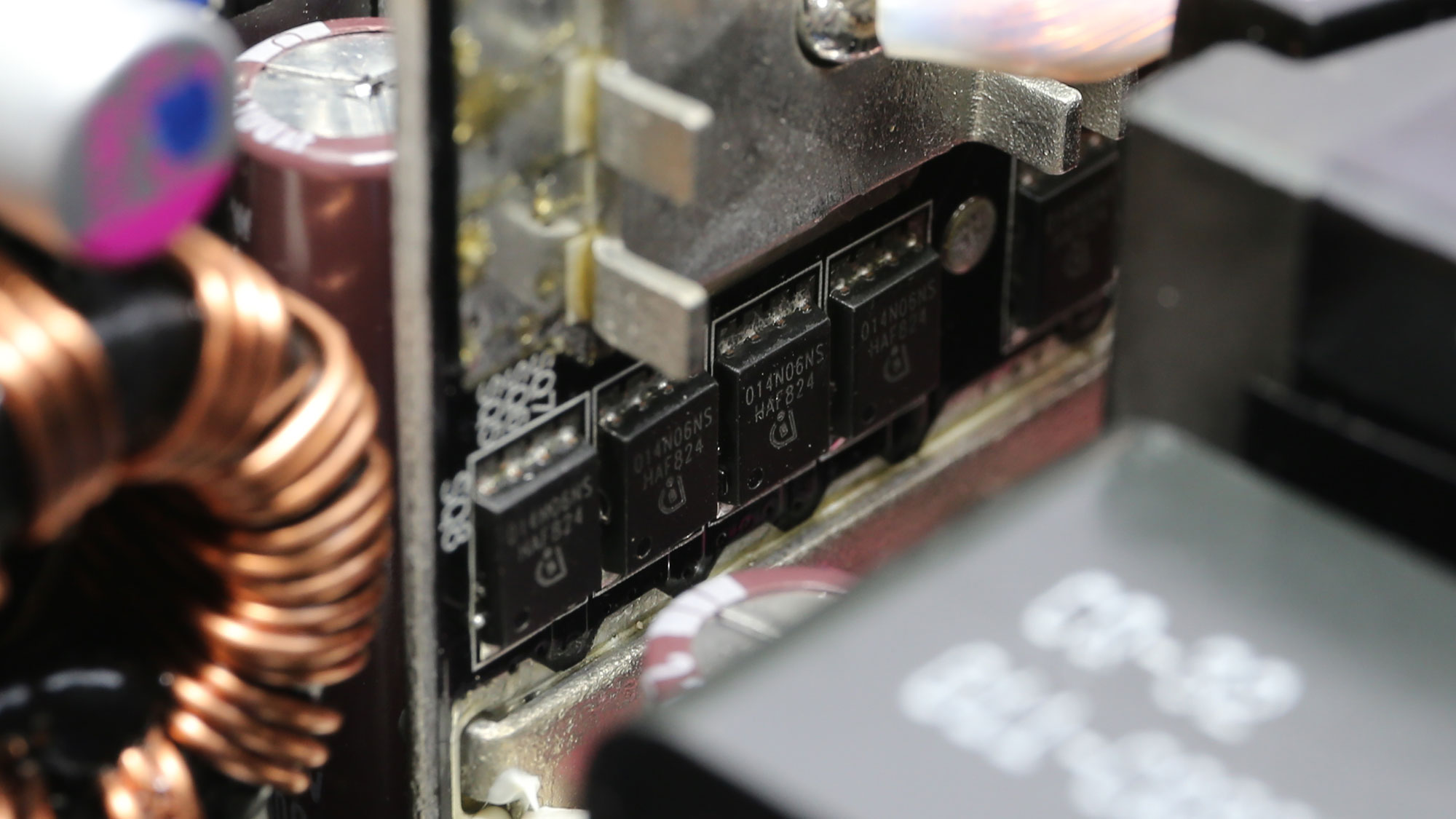
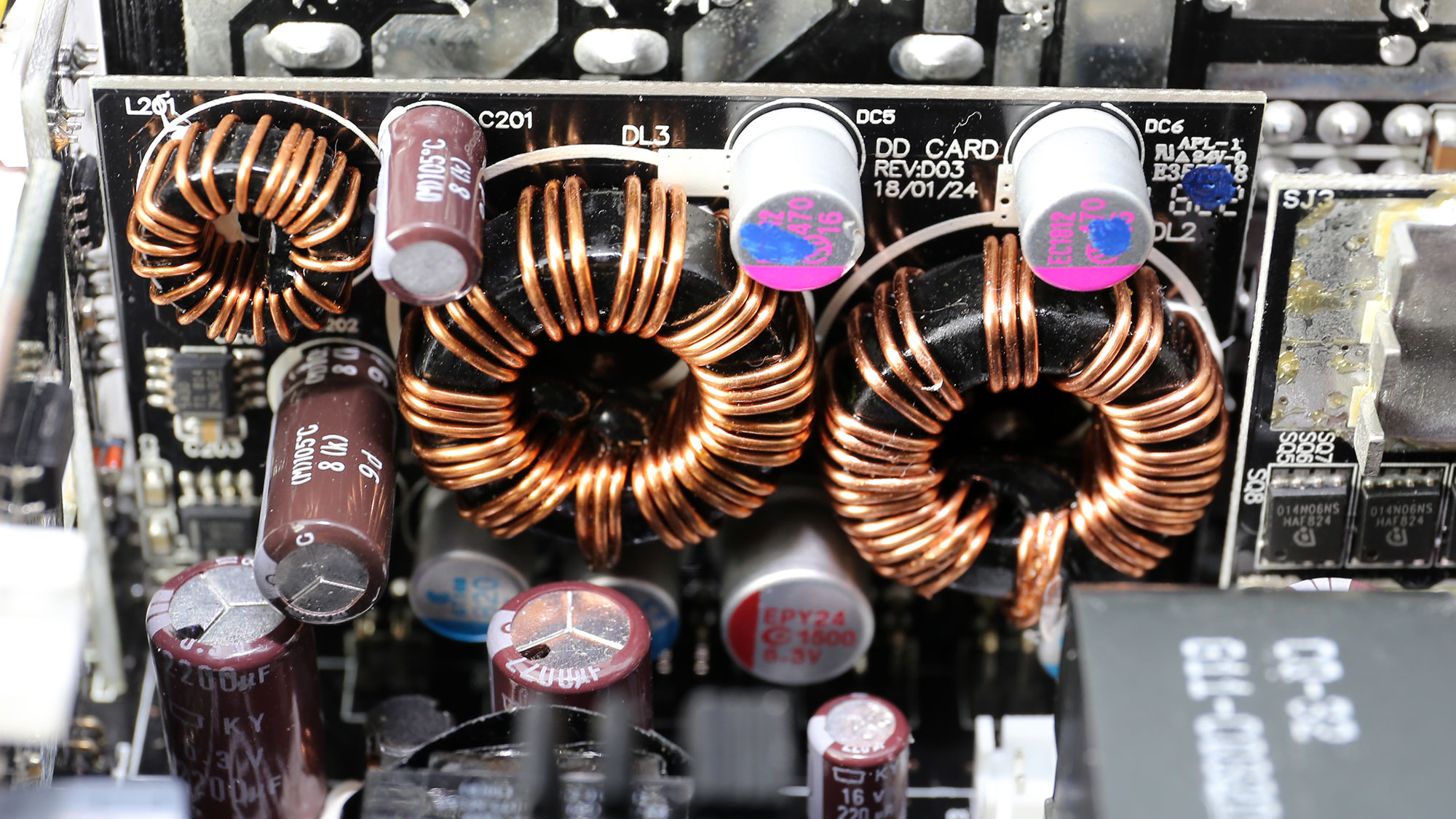

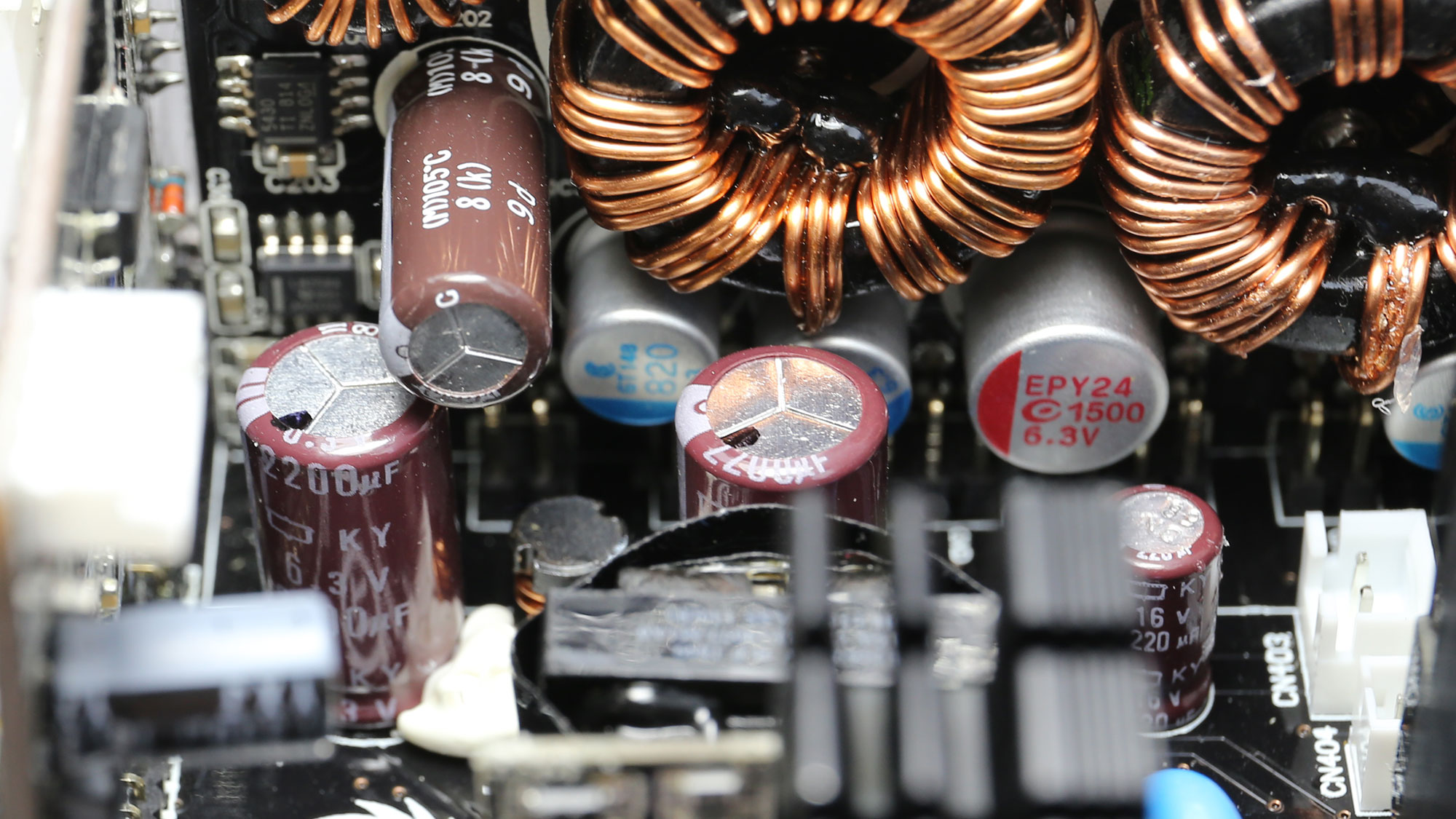
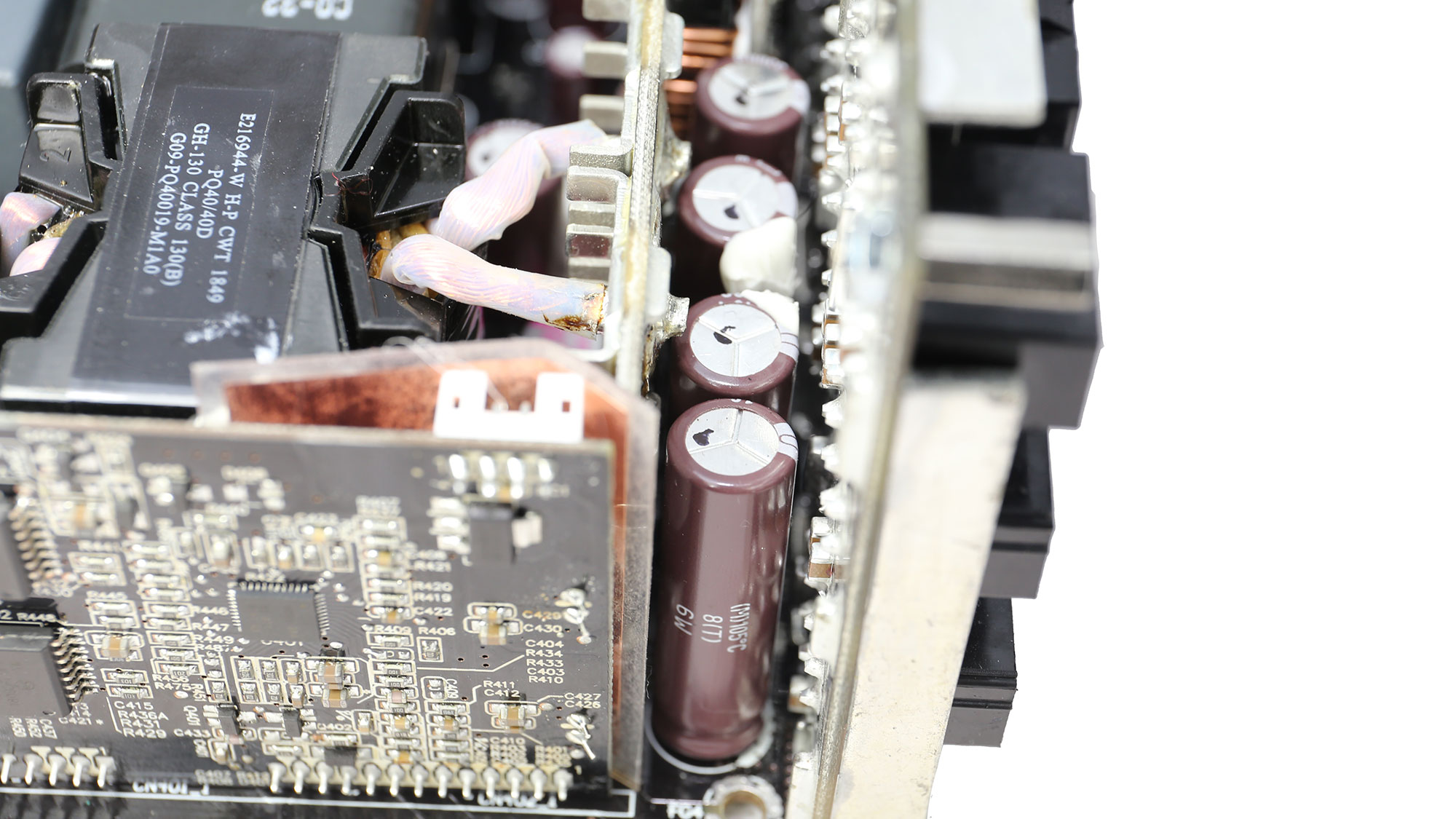
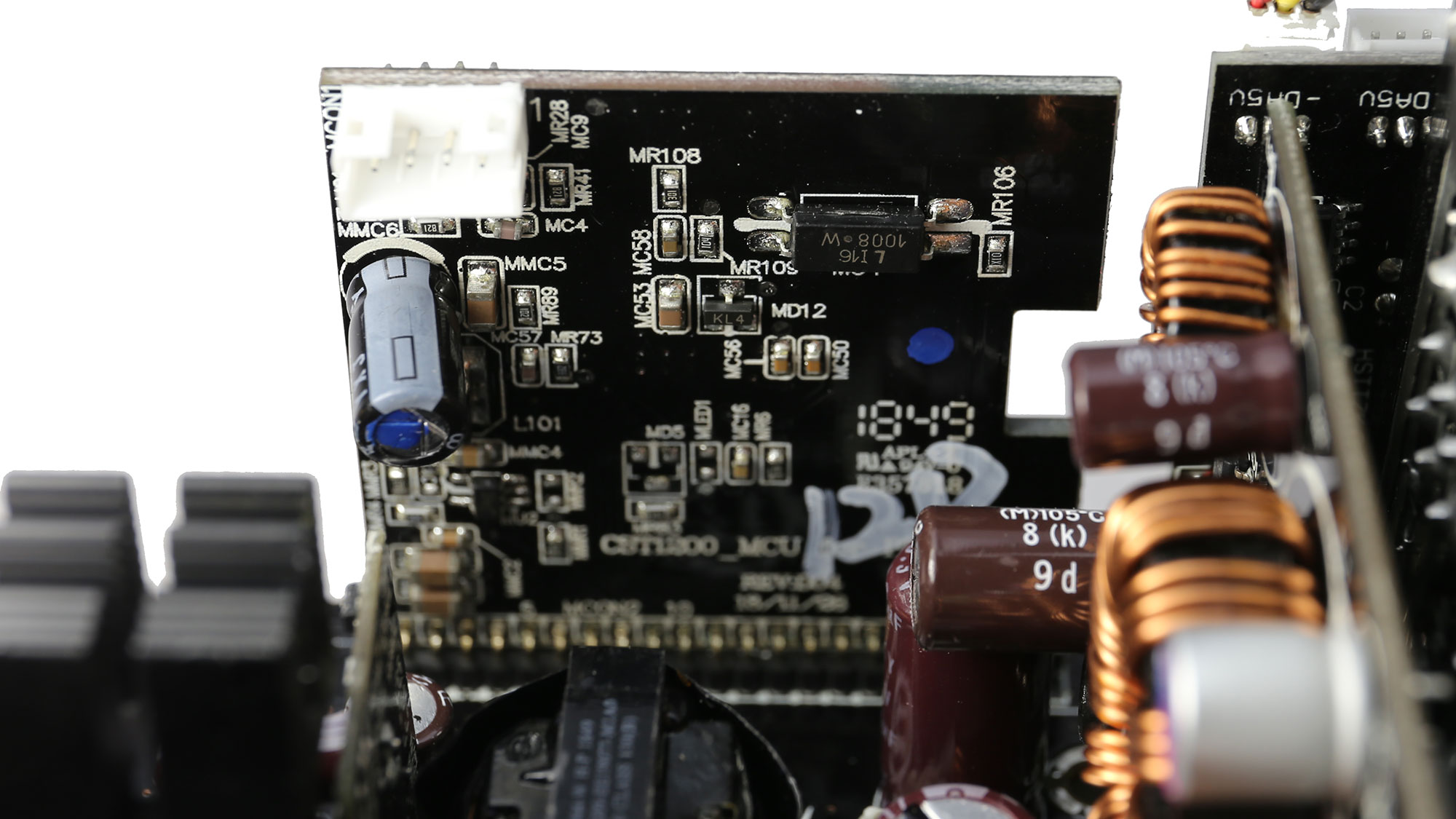
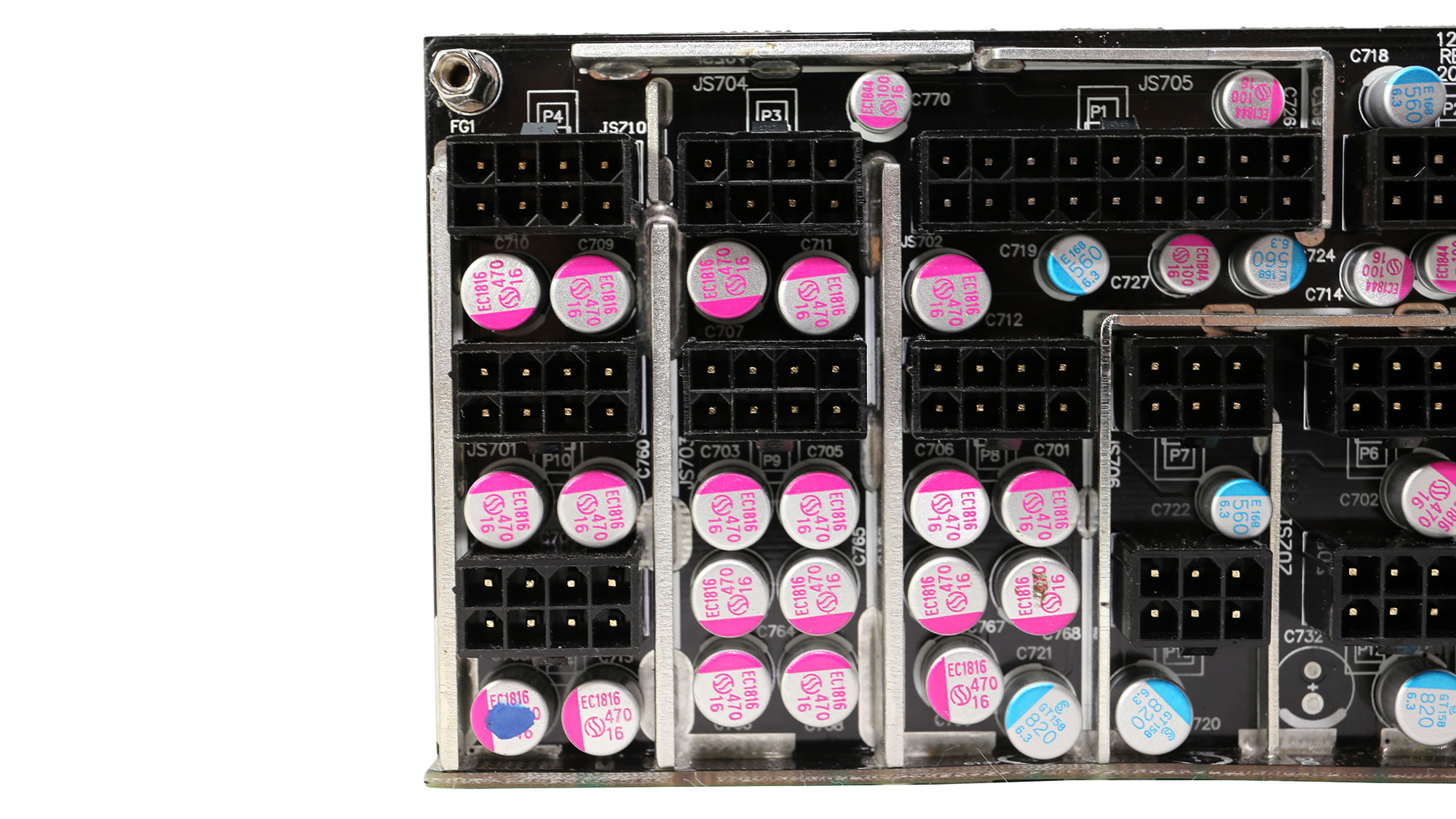
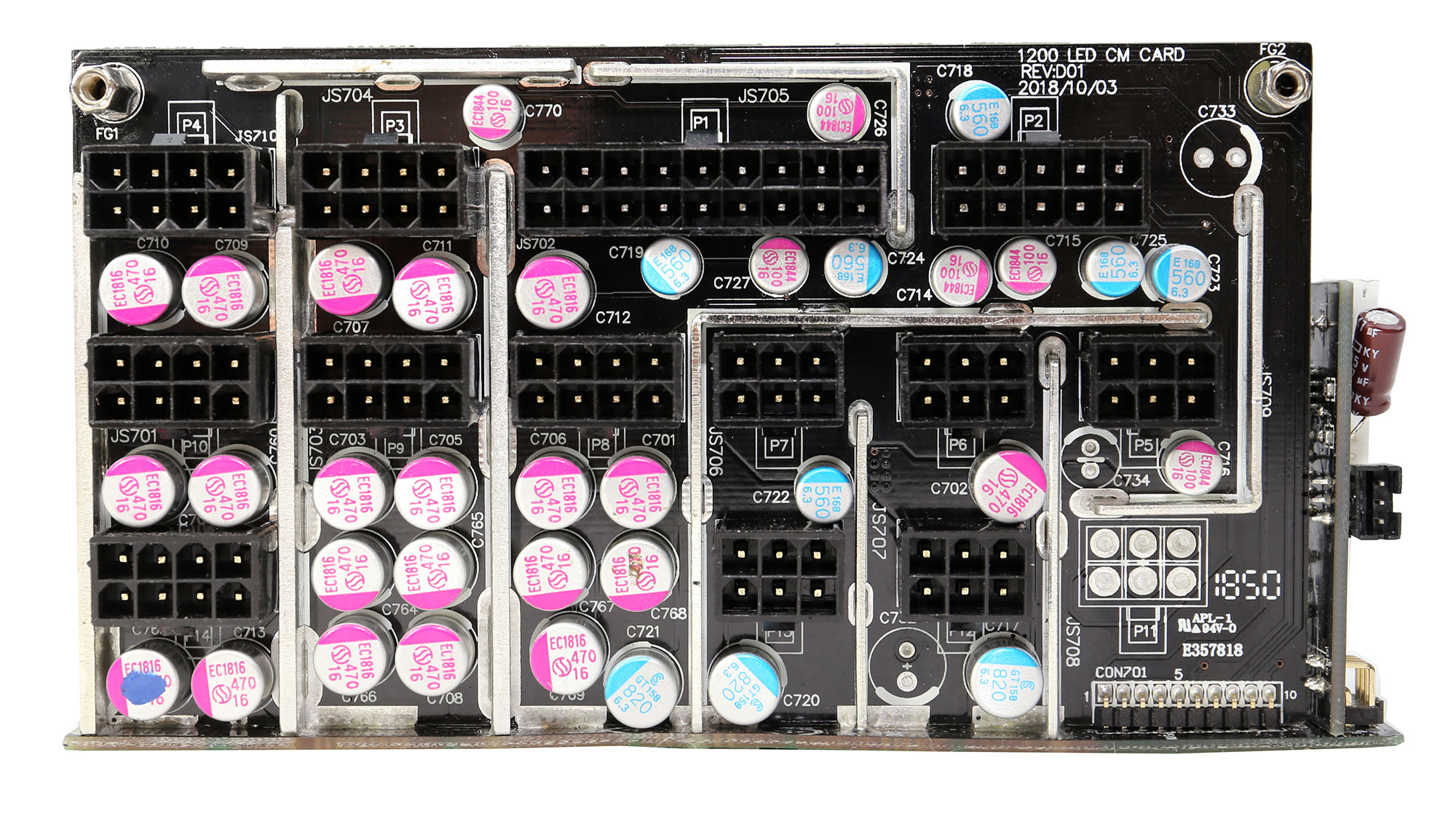

This platform has the code name CST. CWT, the OEM of this power supply, is fond of naming its designs, and we like it as well since it helps us distinguish them. This is a semi-digital design because it uses MCUs for the APFC converter, the primary and the +12V FETs, while analog ICs control the minor rails. There isn't also a USB interface for monitoring and controlling the PSU's circuits.
Get Tom's Hardware's best news and in-depth reviews, straight to your inbox.
The build quality is high, since CWT used good parts, including Japanese electrolytic caps with the majority of them belonging to Chemi-Con's KY line. Some of the polymer caps are not from prestigious brands, but those caps don't have a problem operating at high operating temperatures.
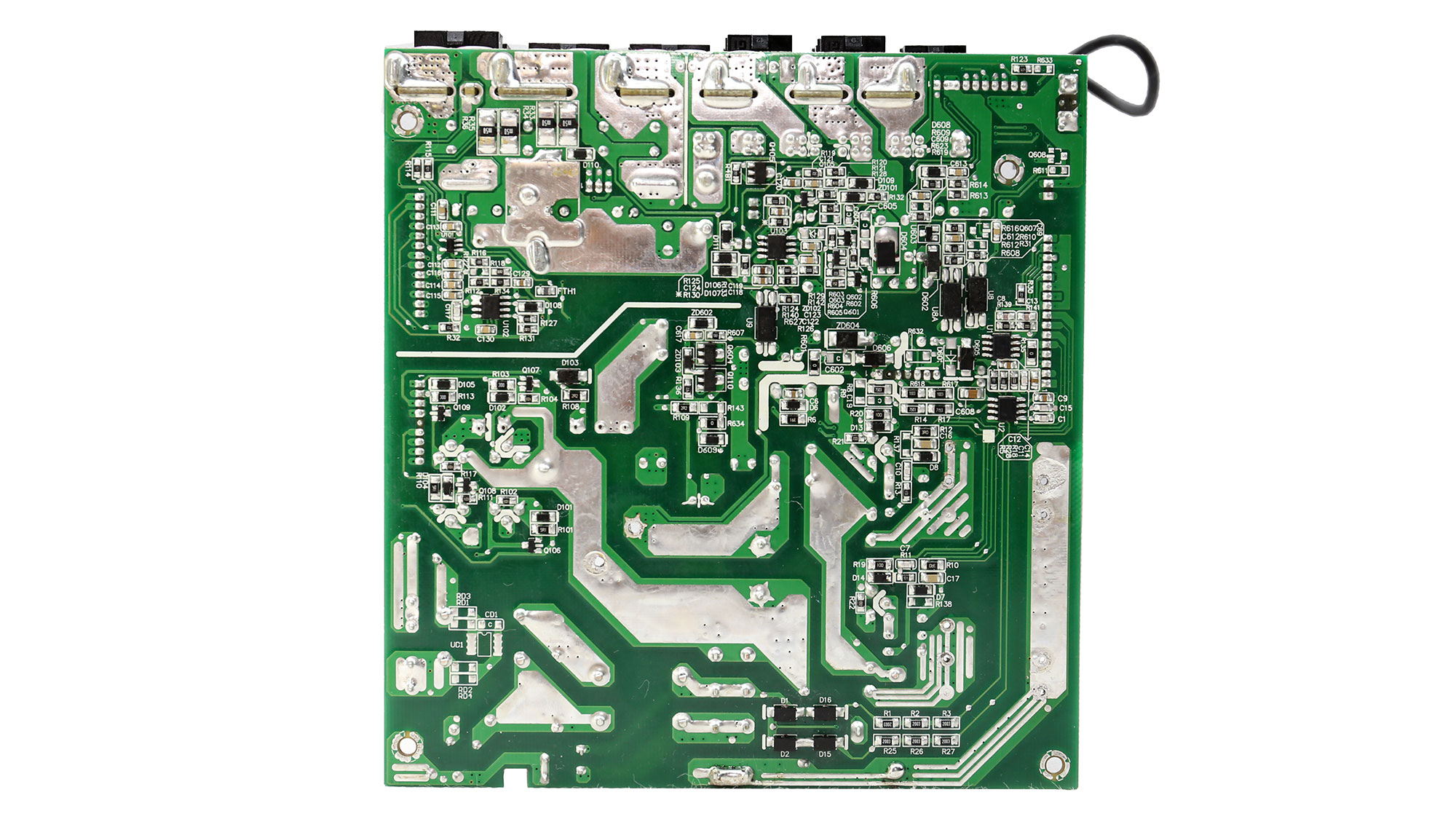
Soldering Quality
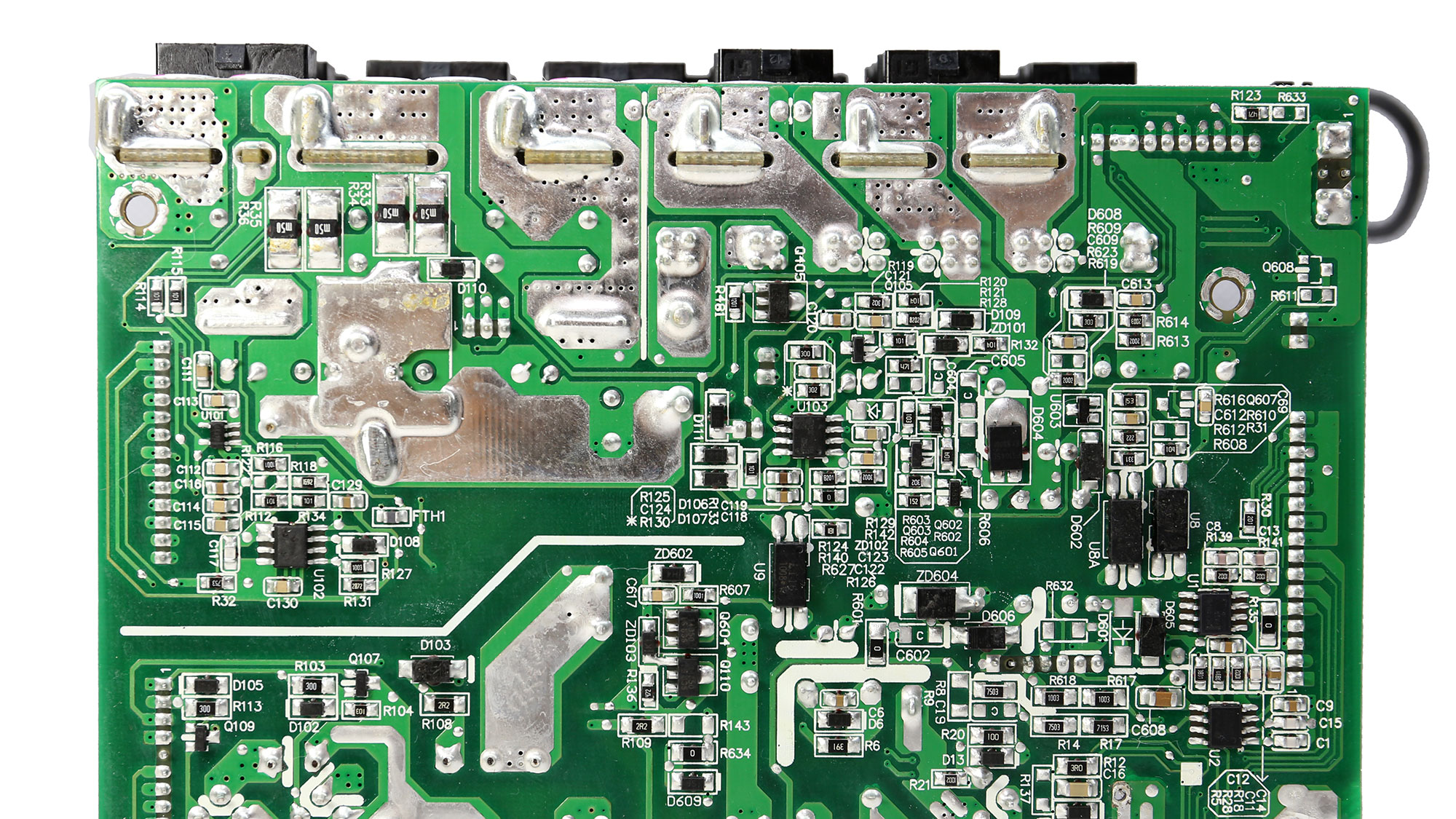
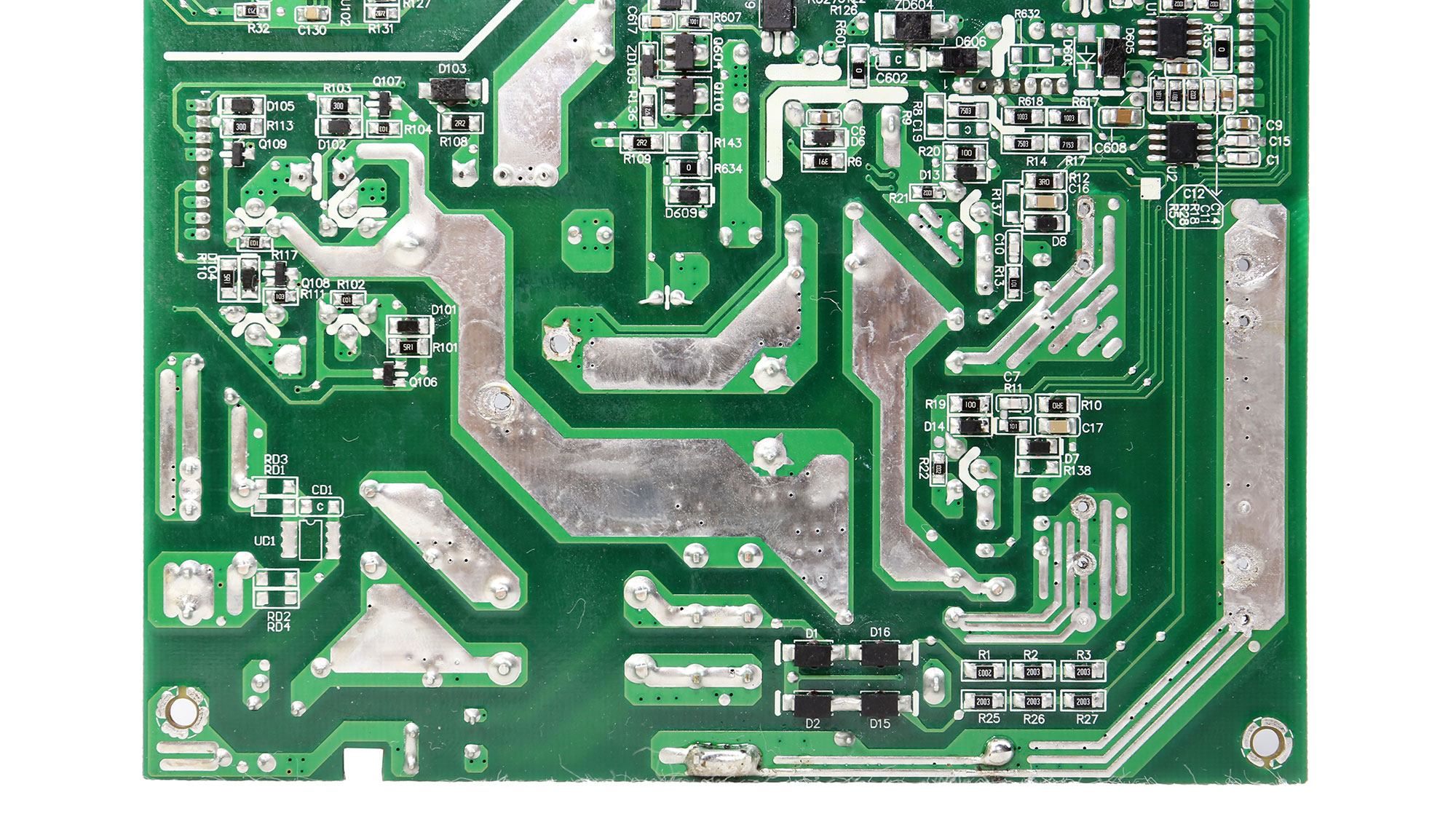
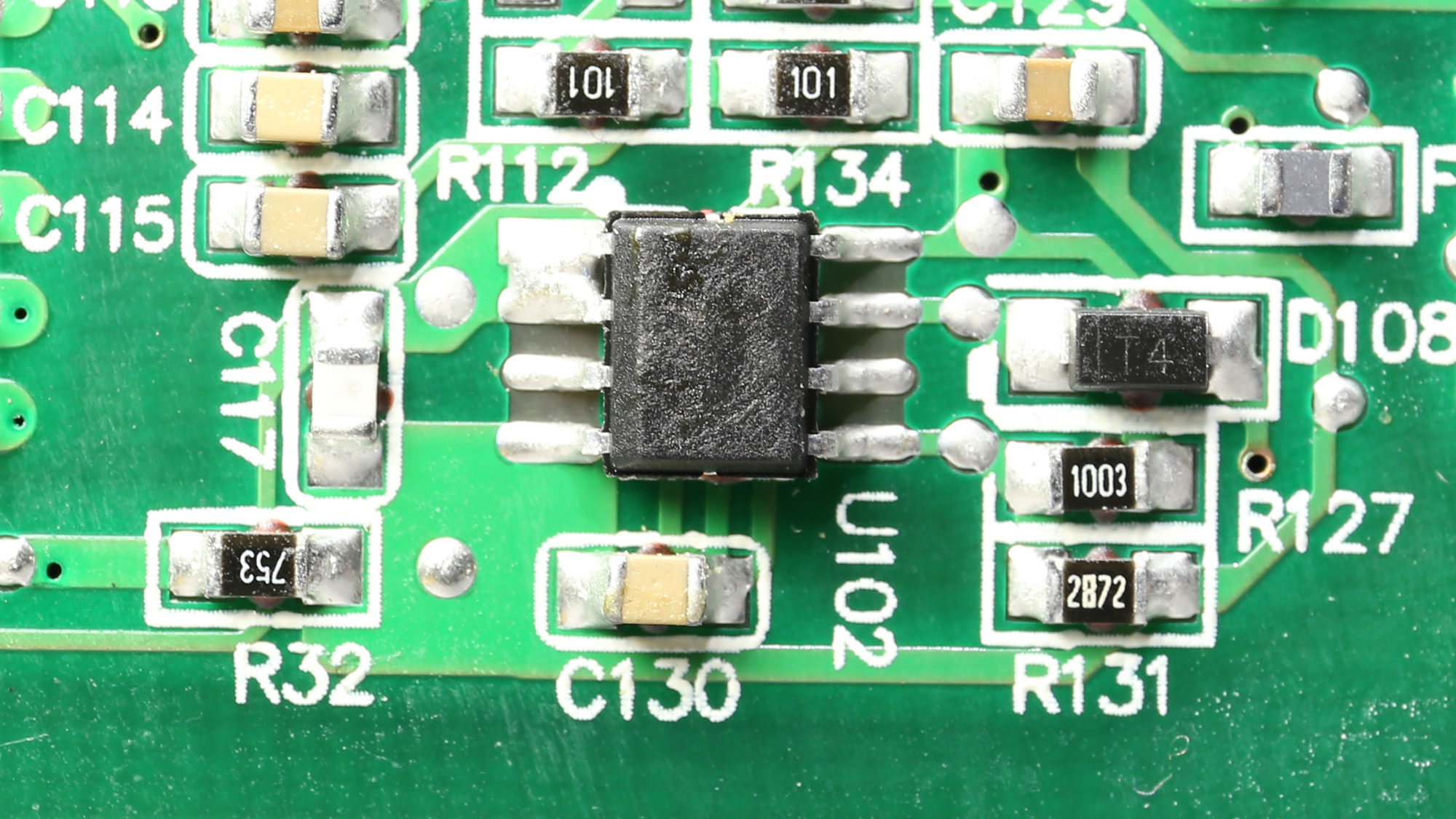



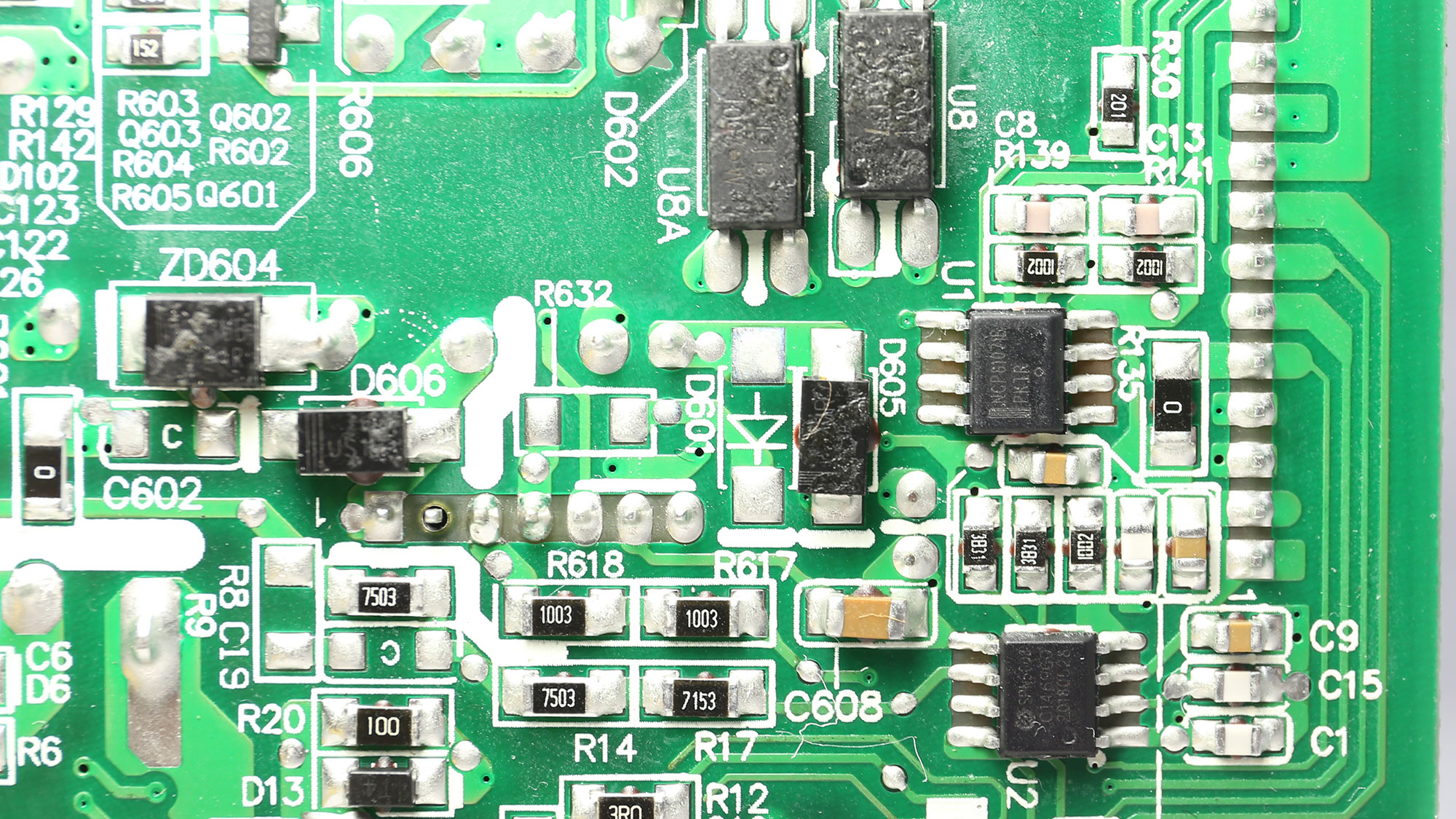
As usual, for a CWT implementation, the soldering quality is good.
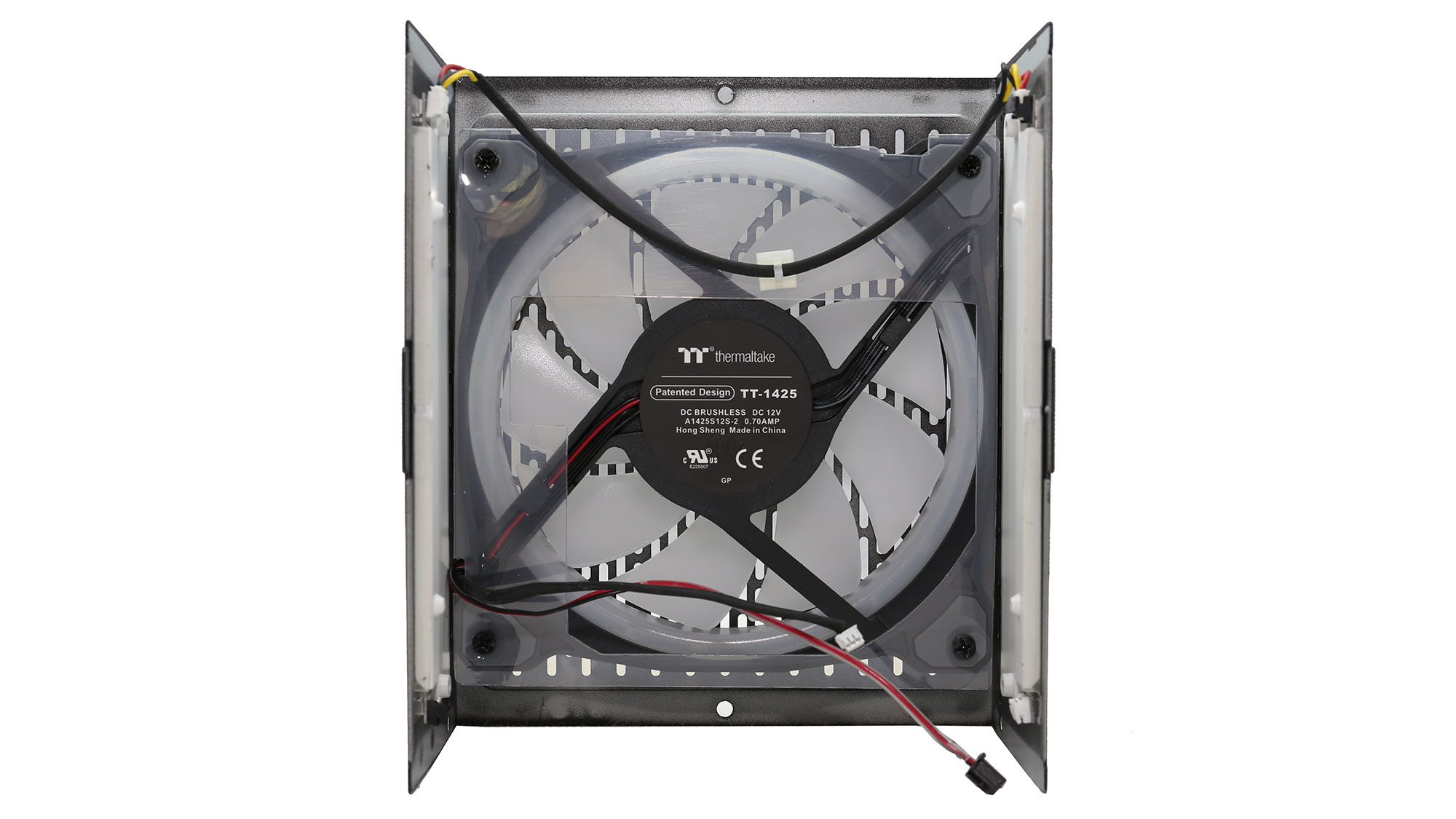
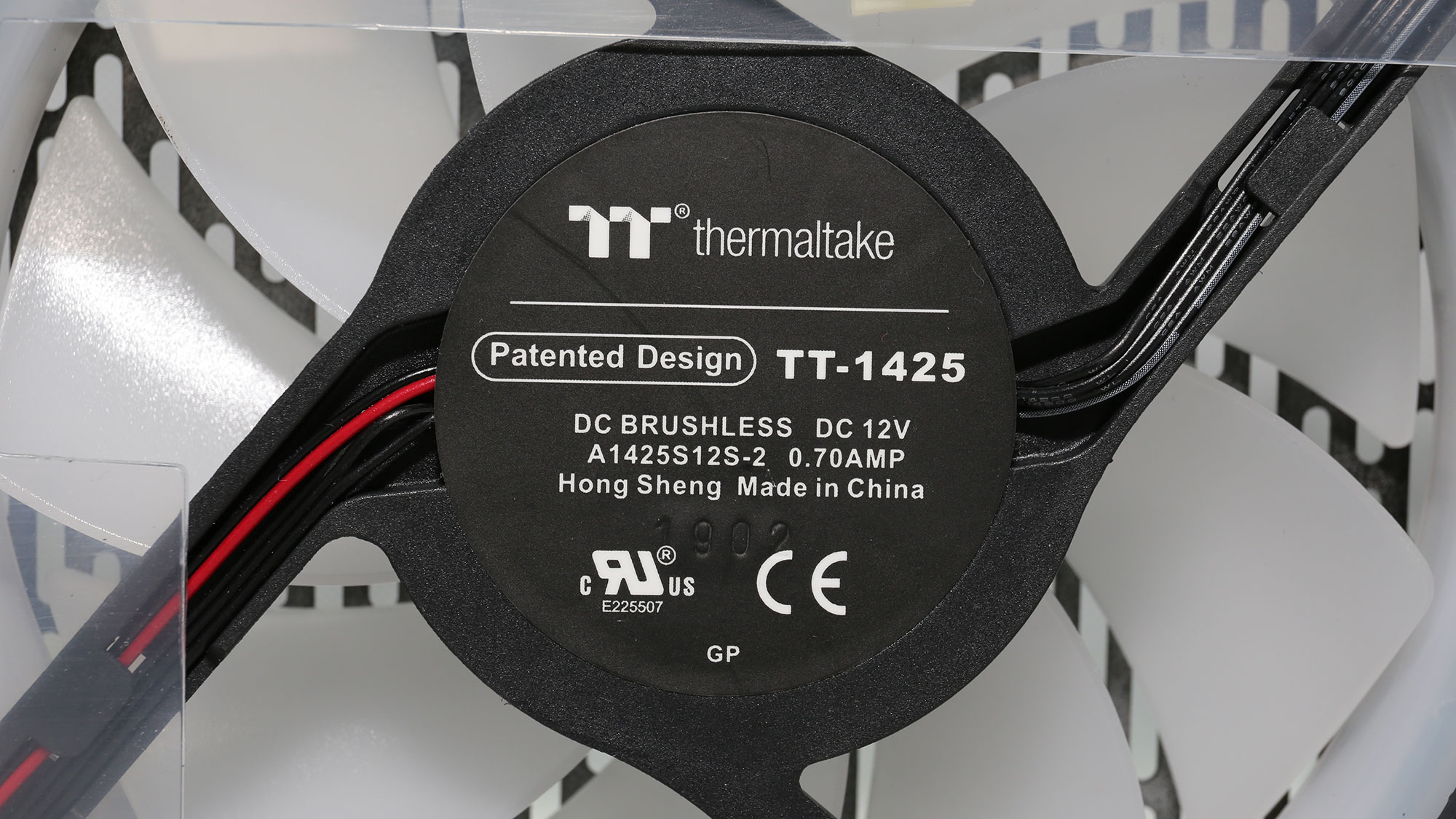
The cooling fan uses a hydraulic bearing, which is identical to a fluid dynamic one offering the same high lifetime and low noise output. The major downside of those bearings is the intolerance to high operating temperatures, which are not a problem for double-ball bearings. The latter have increased noise output, though.
MORE: Best Power Supplies
MORE: How We Test Power Supplies
MORE: All Power Supply Content
Current page: Specifications and Part Analysis
Next Page Load Regulation, Hold-Up Time, Inrush Current, Efficiency and Noise
Aris Mpitziopoulos is a contributing editor at Tom's Hardware, covering PSUs.